Industry Updates
& Top Tips
*N.B. Quick boring bit out of the way first – please note that this part of the Blog does not constitute legal or business affairs advice. We would of course be delighted to help on your specific projects. Blog posts are relevant as of the date they are posted – situations, facts and figures may become inaccurate or change over time.
Creative ways production can carry on in a Covid-19 world
By Sarah Leach, Business Affairs Consultant
Whilst the impact of Covid-19 is seriously disrupting the television production and broadcasting industry we are seeing some exceptionally clever and creative thinking from Mint clients that is enabling development and production to continue. One particularly prevalent method of production is resulting in a new breed of multi-skilled talent as Producers engage and equip talent to film and deliver self-shot content. Of paramount importance to us all is our duty of care to others which clearly includes the contributors our clients work with.
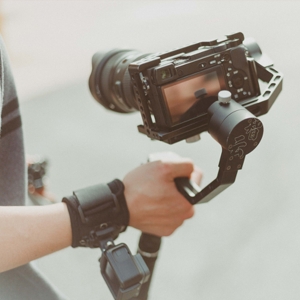
Below are a few tips to help Producers engage with contributors safely.
- Properly and clearly explain to contributors any risk of working during an unstable period of Covid-19 being present and ensure this is documented in the contributor agreement.
- Ensure health self-certification forms are filled in and the contents are properly considered in light of additional risk posed by Covid-19.
- Be aware of the general Government health and safety advice as well as any specific advice issued by the commissioning broadcaster.
- Review and update internal health and safety guidelines and where relevant produce filming protocols to address matters such as ensuring social distancing and methods of travel.
- Ensure that contracts include the right to suspend or terminate filming should you deem it unsafe to continue.
- The industry has very recently released some further guidelines on filming during Covid which is welcome guidance, and you can find it here. ITV, BBC, Sky, Channel 4, Channel 5, STV, ITN, the Association for Commercial Broadcasters and On-Demand Services (COBA) and Pact have worked together on them. In summary:
- Specifically consider people at higher risk of harm
- Heighten precautions for everyone at work
- Reduce the number of people involved
- Consider editorial ‘on camera’ requirements
- Consider mental health and wellbeing
- Feedback loop
Key areas to consider when assessing risk on productions are highlighted as:
- Travel: Try to minimise travel and follow social distancing principles within travel arrangements, wherever possible.
- Location: Consider the physical capacity of the space given the requirements of social distancing along with the provision of key hygiene facilities.
- Work Activities: Consider the activities that people are going to need to undertake across roles on production and if these can be adapted or changed to reduce risk.
- Work Equipment: Work equipment is key to TV production from cameras and headsets to edit suites. Good hygiene and managing potential issues with touchpoints should be addressed.
- Work Patterns: Work patterns may enable you to have small groups (cohorts) of people who don’t come into contact with other groups.
- Rest Areas: Rest areas are very important but may need some reconfiguration and planning around breaks to ensure rest areas are as safe as possible.
- First Aid and Emergency services: Emergency services are under great pressure so may not be able to respond as quickly as possible alongside this Coronavirus
We are always bowled over by the innovation and adaptability demonstrated by our clients and are ready to help navigate and support during this unprecedented time.
Posted: Thursday 28 May 2020
Force Majeure and the impact of Covid-19
By Karthi Perumal, Business Affairs Consultant

Many businesses and organisations are having to consider whether they and their commercial partners, suppliers and customers can continue to perform their contractual obligations in light of the Covid-19 pandemic. In these unprecedented times, the boilerplate clause that may usually be overlooked or dismissed as not that important is now being greatly scrutinised and vital for business survival: force majeure.
A force majeure clause entitles a party to cancel a contract or be excused from the performance of a contract. As there is no established meaning or consequences in English law of the term ‘force majeure’, it must be specifically included in a contract with a definition of what it means, in order to rely on it.
A force majeure clause should be drafted as ‘events beyond a party’s reasonable endeavours, including without limitation…’, otherwise it will be read as attaching to the specific more narrow listed events as the courts generally interpret force majeure clauses strictly. In light of the Covid-19 pandemic it is more important than ever to include ‘epidemic or pandemic’ as a specific event of force majeure.
That said, merely including the words ‘epidemic or pandemic’ does not entitle a party to invoke the force majeure clause as a result of Covid-19 – this depends on a number of factors, for example (a) whether Covid-19 has hindered performance of the contract or made performance of the contract impossible, (b) whether such outbreak was foreseeable at the time the contract was made, (c) what the rest of the contract says and the facts and context surrounding the contract and the parties, and (d) whether the party seeking to rely on the clause took all reasonable steps to avoid the effects or mitigate the risks of the force majeure event.
Posted: Thursday 28 May 2020
BBC Online Commission Terms for Writers
By Nicola Hartley, CEO and Business Affairs Consultant
BBC’s online iplayer commission terms for writers are a little strange in terms of uses that are covered within the Script Fee. We rang WGGB to check the position was correct, as the wording in the SATO agreement which varies PACT/WGGB, was not entirely clear.
The current position is as follows:
- The Script Fee doesn’t buy out any uses (so iplayer/social media etc), it only pays for the writing of the script itself.
- All use fees for online come via a collective arrangement from the Writer’s Digital Payments scheme – these are paid direct to the writer by that body. The PMA and WGGB have a seat on their board and use fees get discussed and agreed every year.
- Writer’s Digital Payments can be contacted directly here for more details.
- The payment to writers is a per-click payment and all royalties come out of a fixed pool and are paid direct to the writers and distributed via ALCS collecting society. It’s an annual payment.
- If BBC wanted to put the programme on BBC main channels or BBC3, then the uplifts in Schedule 1 of the SATO agreement would apply.
Posted: Thursday 28 May 2020
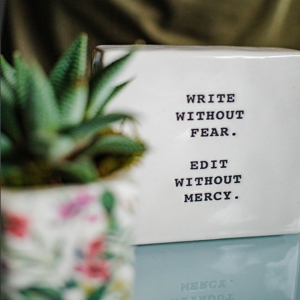
Latest Contract Law Top Tips
By Nicola Hartley, CEO and Business Affairs Consultant
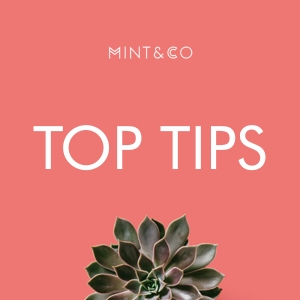
Useful snippets from a recent Contract Law seminar:
- Force Majeure Clauses: should be drafted as ‘events beyond a party’s reasonable endeavours, including without limitation [and then include your list], otherwise they will be read as attaching to the specific listed events. Beyond control in case law points to a party having to be willing and able to carry out the obligation ‘but for’ the event. See Karthi’s post above for more detail of force majeure clauses.
- Legally binding: Do not include a jurisdiction clause in a Heads of Terms/MOU – even if you state elsewhere the HOT are not legally binding, they can be held by a court to be binding as a result.
- Entire Agreement clauses: should be drafted to include the following elements: the contract is the entire agreement between the parties in relation to its subject matter, it supersedes any prior arrangements, understanding and written or oral agreements between the parties, the contract not been entered into wholly or partly in reliance on, nor has either party been given any warranty, including any collateral warranty, statement, promise or representation by the other or on its behalf, other than expressly set out in this agreement.
- Definitions: remember not to include them in the recitals part of the contract. Consequences can be they are not taken into account in interpreting the contract which can be a disaster. If they are in the recitals, also put them into the active ‘Definitions’ part of the contract.
- Deeds: you have to say ‘signed as a deed’ in the signature block but you also have to call it a deed at the top of the document – this is very important. Deeds cannot currently be executed via e-signature as there is no contemporaneous element for the witnessing that is recognised. If not executed as a deed, it is VOID from the beginning, not downgraded to a mere contract
- Good Faith: there is no concept of good faith at law, it was made up by the judges! If including in a contract, give it a job – link it to an obligation in the contract.
Posted: Thursday 28 May 2020
Help for producers and freelancers during Covid-19
By Jules Hammond, Operations Manager
Women In Film and TV, with whom we are members, shared some useful links recently to support the industry during Covid 19; we’ve shared some key ones below. Our partner law firm Lewis Silkin also has an excellent Covid-19 blog that is regularly updated which can be found here and Wiggin’s Film & TV page is a useful resource too.
- Arts Council England has pledged to support the arts sector during this time and freelancers working within it. You can find their latest information on funding and other measures they are taking here.

- Directors Charitable Foundation is expanding their directors support scheme designed to offer short-term support – read more here.
- Facebook grants for small businesses will be launching soon, sign up here for updates – find more details here.
- The Film and TV Charity is available 24/7 on 0800 054 00 00. It offers emotional support, advice and also provides grants.
- PRS for Music has information on an Emergency Relief Fund set up for PRS members which you can find here.
- WGGB has a Welfare Fund for members experiencing urgent financial difficulty. Full details and an application form.
- Pact has provided some useful support links to Government guidance as well as other organisations in the sector, including Broadcasters’ advice to Producers which you can access here.
- Coronavirus: new 100% government-backed bounce back loan scheme: In another measure designed to ease pressure on businesses affected by the Coronavirus crisis and keep small businesses operating, the government announced on 27 April a new 100% government-backed loan scheme for small and medium businesses, read more here.
Posted: Thursday 28 May 2020
Social Media, Digital and Tech

Some further uplifting news, this time on the social media front, as Instagram users can now raise money directly through the platform whilst live streaming
The next technology disruption
In disruptive times, sometimes we need disruptive news to remind us that great technological advancements are still being made, shaping the future of how we interact with the world. David Rose and Hari Nair discuss how organisations can start implementing AR into their offerings, as “computer vision” is predicted to be worth $30 billion within the next five years. Read more here.
Using VR to help mental health
Still on the topic of technology, StoryFutures (an R&D Catalyst for the creative industries) have partnered up with the UK’s Innovation Foundation NESTA, to look at good mental health practices. They have created four Mental Health Fellowships, which will research how immersive storytelling, VR and psychology can be combined to support better mental health and wellbeing. Click the link to find out more.
Filter out too much social media noise
As streaming services have experienced an unprecedented boom in takeup, consumers are suffering from the problem of having too many social media streaming options, with content being drowned out through sheer social noise. Digital Brand Architects (DBA) has launched “Your Live Guide” to aggregate social streaming content for viewers to discover; they have pledged to represent content from all areas, not just DBA’s clientbase.
Travel via VR
Some countries are starting to – slowly, very slowly – lift their lockdown restrictions. However, it will take an exceptionally long time for tourism to return to its previous levels – if it ever manages to. Reduced incomes, recessions and a desire to lead more sustainable lifestyles with less flying may well lead to a smaller tourism industry worldwide. Click for 14 VR travel experiences to visit from your sofa, as well as the BBC’s list of ways to explore the world from the comfort of one’s own home.
Posted: Thursday 28 May 2020
What’s funny about working with comedians?
By Sarah Leach, Business Affairs Consultant
- Content Producers are generally deemed to be the first owner of copyright in the content they produce. Where the content includes creative work of others (scripts, performances etc) permission to use these works must be sought. This is usually done by (i) assignment of copyright to Producer, where the Producer commissions the work e.g. new script, contribution etc or (ii) licence of rights to use the work (archive, music etc) where the work pre-exists the Producer’s content.
- Producers will be familiar with the standard contributor release form which assigns all rights in a contribution to the Producer. These release forms are frequently used in entertainment and documentary style content and issued consistently to all talent irrespective of experience. Take for example a panel show, where the panel show line up includes an actor, a reality star, a politician and an athlete. Each of the panel will be issued a standard contributor release form and, save for a few agent negotiated tweaks, each will be assigning rights in their contribution to the programme on the same terms. However this isn’t the case with a comedian in your panel line up.

You don’t need to spend too long perusing the TV guide before you will find a comedian fronting a documentary, appearing as a panellist on a quiz programme or guest on a chat show. Why is this notable for Producer’s and the humble release form? A comedian (or their agent) will often seek to ensure that any pre-existing material incidentally or otherwise mentioned on screen is excluded from the standard “all rights” release form. This pre-existing material is rarely defined specifically, but is intended as a catch all in case the comedian uses their own material in the Producer’s content. Is this fair to the Producer? Absolutely! We want comedians to freely ad lib and be funny without concern about what’s written in the paperwork they’ve signed. Original material devised by a comedian will form part of the comedian’s main trade and should be treated like any other pre-existing material. The Producer will need to balance the interests of the comedian with it’s own and here are a few top tips on how to do this:
-
- The contribution should be assigned to the Producer as usual with an exception provided for material created prior to the contribution, which I will refer to as “Pre-Existing Material”.
- Pre-Existing Material should only include material which is owned and controlled by the comedian and is capable of copyright protection.
- Usually the Producer should seek to secure a licence in the Pre-Existing Material that permits exploitation in all media, throughout the world in perpetuity.
- Consideration should be given on whether it is appropriate to seek a level of exclusivity or a holdback over specific future use of the Pre-Existing Material. If content relies heavily on Pre-Existing Material it may be appropriate to agree a holdback applicable to competing media, channels or programmes.
- The value of Producer content that features a significant amount of stand up may be enhanced if Producer and comedian agree that a percentage of the performance will be original to the Producer.
- As broadcasters usually require a warranty that content is original, the use of Pre-Existing Material must be discussed at the earliest opportunity. Mint & Co. can help guide Producer’s through this process and advise on appropriate wording to amend standard release forms.
Posted: Thursday 6 February 2020

Set designer tips on VR projects – What to expect
By Karthi Perumal, Business Affairs Consultant
Virtual reality projects are becoming increasingly popular, so if you find yourself venturing into this new world you might want to think about how the rights, options and holdbacks differ from the more traditional aspects of television. Here are a few discussion points that a well known set designer may ask for on a virtual reality project:
- Further productions: if the set is repurposed for any other purpose or medium, then the set designer is likely to request a first right of refusal to provide their services which could be agreed to, subject to the usual conditions, being (i) availability of set designer, (ii) an active set designer for the type of further production, and (iii) agreeing key deal terms within a reasonable period of time.
- Credit: an appropriate credit on a most favoured nations basis with other members of the ‘creative team’ i.e. lighting designer, costume designer, sound designer and video designer.
- Complimentary tickets to exhibitions and events where the project is displayed.
Posted: Thursday 6 February 2020
Legal jargon – warranties, indemnities. What’s the difference?
By Karthi Perumal, Business Affairs Consultant
Have you ever wondered what a warranty is and why we have them in contracts, or what an indemnity is, and the differences between the two? Here’s a top line summary in simple terms:
Warranties
A contractual statement of fact made by the person making the warranty to the person it is making such facts to.
A breach of warranty will enable the party who suffers a loss to claim damages (i.e. money) if they can show a breach of warranty and quantifiable loss.

Indemnities
A contract by which the party providing the indemnity undertakes to indemnify (make good) a loss incurred by the other party. It is a right to recover pound for pound a particular type of liability, should it arise.
Differences
An indemnity provides guaranteed compensation in circumstances in which a breach of warranty would not necessarily enable a claim for damages or to provide a specific remedy that might not otherwise be legally available.
The party suffering the loss will need to mitigate any loss for a breach of warranty (i.e. take reasonable steps to ensure that further losses are kept to a minimum), but there is no clear obligation to mitigate loss under an indemnity, unless the contract expressly states this requirement.
If you are looking to have losses covered for a default of the other party, it’s important to have your indemnities carefully drafted so as to cover as wide a recovery of loss as possible. On the other hand, if you are giving an indemnity, you want to try to draft it narrowly and link it to specific breaches/circumstances, ask the other party to mitigate losses and also ideally exclude certain ‘indirect’ losses. An example of an indirect loss is something that a party might not necessarily have foreseen. If you are giving wide indemnities, one way to limit your exposure under the contract is to apply a limit of liability, e.g. X times the contract value, or linked to your insurance levels.
Posted: Thursday 6 February 2020

Round-up of C21 Unscripted highlights from the end of 2019
By Nicola Hartley, CEO & Founder
YouTube’s Luke Hyams
Luke talked about 3 big music shows in the offing for 2020 and looking in particular for:
- Reality projects showing a journey with someone already established on a platform, eg a creator or celeb who wants to travel to the moon or there is a new reveal in their life (eg having a baby);
- Shows for female audiences. Feels they are pitched a lot of male skewed stuff, need to grow female audience and speak to them better;
- A collection of YouTube creators together and taking them on an adventure. Natural and ‘less hand of the producer’;
- Ideas using platform functionalities- eg donate button, great to bring that to the fore, or YT stories, live streaming, or shows across a number of different YT channels.
- Do they need YouTube creators in all of content? They feel it’s the right thing to do. Don’t need in all of them, but is the main focus.
- Pitches around dates in the calendar can be great – can be put places that a normal show might not. International Women’s Day- they wanted front page entertaining piece.
- New docs strand… ‘how to be… ‘ eg Mark Ronson, loads more of those coming down pipeline. Two most searched words on YT are – ‘how’ and ‘to’. Worth producer’s thinking about search results.
Danny Fenton on trends for short form content strategy
- Black Verse has 3-5 min stories, most target market is via phones. All self invested. 15-20k per episode. They have a Commercial ads side of biz too – helps fund original content.
- Whistle generally 4-12 mins, 4-6 for snapchat, Facebook nearer 12. Most content 10 mins or less. Launching an app next year for Hulu. Quibi higher cost – 4/6k per episode, if they can sell branded content against, it helps monetise and can be across multiple platforms.
- MTV Gen Z target. Budget varies so much. Low cost short form content on day to day basis. 4-6k an ep too. Linear A major part still. Short form monetisation on platforms. Branded content and partnerships is a growth area. MTV had a Facebook partnership recently.
- Ficto have full production team. Indie artists as well as household names. 10 x 10 £1 to £7 million per series so bigger budget. Is an avod platform. Also have click through purchases and brand sponsorships. Avod Rev share split with creators. Launches Feb 2020, watch this space.
Building audiences through social with Facebook
- Facebook Watch only launched outside US 1 year ago
- Now open to everyone and not a closed platform
- Factual, ent, clips and short form on there
- Facebook originals are largely coming out of LA still
- Anyone can upload to a Facebook page and may well feature in Watch
- In-stream ads – need 30k followers and certain views of 1 minute plus on a 3 min video, to qualify for in-stream ads
- Sam Barcroft of our client Barcroft Studios:
- Good platform at getting a lot of content to a lot of people all over the world 24/7. Power of global broadcast in your back pocket
- People use it to have conversations, differentiates it as a platform. More community conversation on Facebook than other platforms
- Producer wholly owns their content
- Barcroft Studios fund own content too for own channels, to have less reliance on commission only
- Most incredible homes for Facebook – included voting on which audience loved the most – interaction with the content. 360 video and other tools used
- Average profit for an episode – earn back of the original is across multiple platforms. Now they are all monetised platforms, 3 x platforms . Multiple ways to monetise the content over time
- It’s a show-based model as opposed to channel based (like YouTube). Same with Snapchat
- Is it a problem it’s not exclusive? Dan at Facebook says no. Originals have exclusivity. But it’s an eco system. Point of originals is to ferment innovation with formats, especially using platform tools.
Funding Partnerships – Brands
- Starbucks talked about funding a football related programme
- They are a Storytelling organisation. Creating connection
- Funding Interesting content their way ‘is a no brainer’- Lends to ethos and values
- Producers Brutal Media and October Films led on the story
- Producer commented that unlike some commissioners, Starbucks’ notes were really good- the kind of response you’d get from a viewer. Process clean and simple
- Starbucks said they can’t quantify level of exposure and engagement but not a worry for them, it is more about broad awareness of storytelling as a brand. They’re getting into content creation to create emotional connection
- Starbucks have a stories platform – for customer back stories
- Couldn’t give level of the investment or the deal with any revenue share- all undisclosed
- Amazon came on board later in the process to help give the doc a global audience.
Podcasts Panel
- Spotify commented on how podcasts are diversifying the industry. But still only 25% reach
- 800k podcasts on Apple
- How to get it found? Spotify putting a lot of work into that- personalisation and discovery
- Gimlet said hard to make revenue from ad funding. Has now been bought by Spotify
- Ad supported remains huge part of the industry to build niche audiences. So far people not paying a subscription for podcast content
- Listen Entertainment Tim Hammond, thinks TV skills work really well with podcasts. Not sure a TV- related podcast creates a new audience but deepens relationship of the TV audience
- Generally no geo locking so good way to find international audiences
- Story Hunter talked about a parenting podcast for LGBT audiences and optioning a script for a podcast. They think we will see more formatted stuff. Kirsty asks what does a live ent show feel like on podcast? Up to now podcasts have been a cheap way of making interviews and needs to evolve as a medium
- Some people prefer to listen as audio rather than TV, not being on a screen
- They talked about what timeless doc stories look like and reversioning for podcast
- No podcast rates on WGGB writers’ guild agreement- working off radio rates. This needs to catch up
- BBC sounds up to 5k per ep. Acast or audio boom might give more
- Monkey kingdom podcast – with C4 brought TV formatting skills to podcast
- My dad wrote a porno Talked about Finding voices out there and Links between TV and podcast. Easier to have a link with a broadcaster and TV IP
- Business model- totally independent. Retained the IP. Paywall model- not there yet. Too soon, still so many who don’t know what they are. Limits your audience
- Ad funded- insert ads and host-read sponsors
- Have been 2 world tours, a book and merch too, so great other revenue streams.
Posted: Thursday 6 February 2020
Social Media and Digital News
TikTok
If you know a child with a phone, chances are you may have heard a fair bit about TikTok (the social media app where you share and watch upto 60 second video clips). The short form content platform is building brand interest following its stratospheric rise in popularity – ending 2019 with over 1.5 billion global installs and more than 500 million active users. If it’s not something you’ve downloaded yet, we thought we’d share 5 things you need to know about the app that’s proving it’s no longer just for the kids:

- Yes there’s loads of mini music video clips, but it’s stand-up routines, edgy comedy videos, memes as well as recipe ideas that make up some of the fastest growing and most popular content
- It’s a natural, no filter, ‘homemade’ approach that directly opposes the more professional Instagram Stories
- The simple and accessible editing tools mean everyone can create easy to make, short form content – with the same chance to go viral
- It’s proving one of the best ways to reach young people – some music artists see becoming ‘TikTok famous’ the best way to reach a mass audience. Lil Nas X became a viral meme and this contributed to ‘Old Town Road’ being the longest running ever no. 1 in US and UK chart history in the summer of 2019
- The ad offering in the tool includes brand takeovers and hashtag challenges and the opportunity to connect directly with the ever elusive youth market who can’t get enough of it so far it seems.
Arming Gaming Creators With Preset Tools To Encourage Inclusion
We’re pleased to hear that Facebook has announced a new ‘toolkit’ to help promote inclusion, collaborating with the Fair Play Alliance – a coalition of gaming companies working to establish healthy online communities – to develop rules that creators can choose to implement before they go live. The eight preset rules include: ‘Be accepting’ (no matter a community member’s race religion, sexual orientation, or gender identity); ‘Respect boundaries’ (in terms of not making advances or comments based on appearances); ‘Don’t criticize’ (someone’s gameplay or game choices); ‘Don’t be rude’ (in terms of threats or insults); ‘Don’t flood the chat’; ‘Don’t self-promote’; ‘Keep it clean’ (with respect to obscene or inflammatory content); and ‘No profanity’. Creators can select from the above standards in the ‘Chat Rules’ section of their dashboards, and fans will be asked to accept them before being allowed to comment. The toolkit is being tested among a small group of creators, and will roll out globally in coming months. Moderators will be given access to a new dashboard with resources that work to prevent harassment and protect their privacy. Read more about it here
Insta Stories – latest update to help brands repurpose UGC
This article explains how tracking the conversations happening around brands just got easier with a recent Instagram update. A new tool gives brands a glimpse into their total number of mentions and ways to add visuals or text to the content for their own sharing purposes.
Living in ‘Creator’ mode, the @mention option collects any Stories that tag your account and provides a full tally – helpful to businesses that attract a lot of user-generated content. However, they are only visible and repurposable as long as the Story is live — meaning the 24-hour limit applies.
Aside from helping showcase relevant mentions including consumer reviews, endorsements, and influencer partnerships, this update is one that caters to a more permission-based, personalized future where users want to feel heard and have the ability to form relationships with the brands they love in safe and trustworthy spaces.
YouTube
New YouTube rules regarding ‘Made for Kids’ content are responding to COPPA compliance.
YouTube are expecting creators to make the decision as to whether videos should be designated as ‘made for kids’, for example, they list animated content as being content that should usually be labelled as such. The content can still be monetised, but with non-targeted, non-personalised ads, and also the comments functionality has to be removed for kids content.
YouTube have for the first time revealed how much revenue they generate from Ads. A WHOPPING $34.4 billion in the last 3 years!
Posted: Thursday 6 February 2020

Ofcom Consultation on Due Care
Following some high profile fails of certain ITV shows over the course of the last few months (following which, duty of care on Love Island has been bolstered and a certain Jeremy Kyle’s show axed), Ofcom are consulting over improvements to duty of care provisions in the Broadcasting Code, with the intention of protecting the wellbeing of participants in TV and radio shows. The additional proposed wording for broadcasters to comply with (and ultimately producers, with their protocols and processes) is as follows:
The closing date for responses is 23rd September, and we’ll be keeping a close eye on the outcome an any related guidance. Posted: Sunday 15 September 2019
BritBox Update
So far, we’ve gleaned the following key info about the service:
- You can have a 7 day free trial, we like that
- It is launching really soon in Q4 this quarter October-Dec 19
- It will cost £5.99 a month
- The platform promises the largest selection of British TV content in one place
- There will be original commissions as well as just archive content
- Talks are happening re putting the platform on Freeview and Sky Q
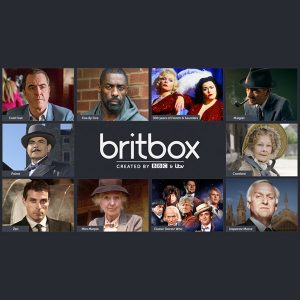
- BBC’s extended 12-month iplayer rights, plus VOD holdback, will enable it to move shows across to the platform after the iplayer 12 month period. PACT’s McVay recently criticised BBC for ‘throwing producers under a bus’ because effectively “indies will have no option but to sell to BritBox during the 12 to 18-month holdback period – once the newly-extended iPlayer window has elapsed.”” He said “The BBC is now gerrymandering their own terms of trade to benefit something they have a commercial interest in. I want BritBox to be a commercial success if it can be but it should run on sound commercial grounds”
- TV shows will move to BritBox after 30 days on ITV Hub
- Will it be the BBC and ITV’s answer to Netflix that they hope it will be? Oliver & Ohlbaum’s recent survey of 8000 consumers, reported in Broadcast, pointed to Netlfix being the biggest loser of subs as a result of Britbox’ launch. They estimate a sign up by Britbox of 2.1m subscribers in the first 3 years (Netflix is currently 11.5m)
- ITV will initially hold 90% and the BBC 10% of the equity. “The BBC reportedly has an option to acquire additional shares over time up to 25% in total and ITV will have the ability to bring additional investors on board. ITV will be able to appoint a majority of the BritBox board while the BBC’s equity stake provides it with board representation from the outset”
- We hope it does really well and commissions great content as well as relying on archive, but we’re not ditching our Netflix subscriptions just yet…albeit nostalgic re-runs of Gavin & Stacey and The Office could be pretty comforting viewing in these bleak political times
Posted: Sunday 15 September 2019

Summary of Pact’s New Channel 4 Terms of Trade
By Karthi Perumal, Business Affairs Consultant
Pact has concluded new Terms of Trade (TOT) with Channel 4 (C4) which will be implemented across all productions commissioned from 1 July 2019. The purpose of the new TOT is to allow C4 (in the UK) and the producer (ex-UK) to innovate and operate in an agile way. Here is a quick overview of the TOT:
Rights:
- The TOT will govern C4, More 4, and E4.
Revenues / Payments:
- C4 retains all revenues from C4’s usage in the Territory (UK/Eire).
- The producer keeps all ex- UK/Eire revenue and, after expiry of C4’s licence period, all revenue in the UK/Eire as well.
- The producer shares all revenue with C4 in the UK during the licence period – being 35% for single and single series programmes after the initial exclusive period.
Use:
- C4 is given more royalty-free uses in its own territory for a fixed licence period of three years (which can be extended with a payment to the producer).
Licence Period:
- Three years (C4) or five years (E4) from the earlier of signature or date of pre-production until the end of first use of the last episode of the programme for single and single series programmes.
- Three years (C4) or five years (E4) from first use of the last episode of the programme in the final series, as extended by the exclusive option periods.
Exclusivity:
- Minimum 12 months (C4) or 36 months (E4) from the first use of the last episode of the programme.
- C4/M4 returning series – the later of 12 month period above and 30 days after first use of last episode of programme of next relevant series.
- During the licence period, C4 can pay producers to make programmes exclusive and/or available on third party UK platforms.
Format holdback:
- If C4 wishes to recommission and the parties fail to agree terms, then no exploitation of format for 24 months from date of first use of last episode of the programme.
- If C4 wishes to recommission and the parties agree terms, then no exploitation of the programme format.
- If C4 does not wish to recommission, producer can exploit format 12 months from first use of last episode of the programme.
- If C4 does not use the programme by 12 months of full delivery, then producer can exploit ex-UK/Eire.
Posted: Sunday 15 September 2019
Contributor Consent: A Matter for Careful Consideration
By Sarah Leach, Business Affairs Consultant
Obtaining appropriate contributor consent is essential to the production and exploitation of your programme and needs to be given careful consideration in every situation: from a passer-by accidently caught on camera to a couple a Producer intends to intimately film having their first baby. When considering consent, Producers must comply with the law, the OFCOM Broadcasting Code and usually with commissioning agreement terms and broadcaster guidelines. As a general rule, if a contributor can be identified, their consent to be filmed and included in a programme is required.

They extent of and manner in which consent should be sought varies depending on circumstances and we can advise on best practise and supply appropriate and tailored consent forms, filming notices, release forms and agreements. Below are examples of the sort of matters that should be considered before filming.
Filming in a public place (e.g. safari park)
- Provided that filming is not covert and individuals are not shown in a negative or pejorative context, then Producers are unlikely to need express consent from the general public caught on camera unless their words are recorded or Producer films with them directly. There are exceptions to this, but in the majority of cases a filming notice will suffice.
- Filming notices should be placed clearly and frequently around the public area which provide detail as to when filming will take place, include a description of the programme, it’s intended use and who to contact in the event an individual requests not to be included in the programme. Filming notices need to comply with data protection laws and must make reference to a Producer’s privacy notice.
- Individuals who are asked to appear on camera should be given the opportunity to give informed consent whereby the nature of the programme and their contribution to the programme is properly understood and a release form is signed. Individuals who are accidently caught on camera where consent is needed should be approached after filming to give informed consent of their contribution being used in your programme. If consent is withheld, their contribution will need to be removed or pixelated.
Filming children
Filming anyone under the age of 16 generally requires parent/guardian consent. As with individual consent, parent/guardian consent should be informed and documented in a release form. Irrespective of parent/guardian consent, Producer’s have an overriding duty of care in respect to the welfare and dignity of individuals under the age of 18. We would advise Producers to have a filming protocol in place when filming under 18s. It’s important to remember that during filming, the course of events can change quickly and the criteria on which consent was given may no longer be applicable, meaning consent may need to be re-sought, and sometimes at regular intervals during the filming period.
Filming in a hospital
- Gaining proper consent when filming individuals in a hospital setting requires a significant amount of careful thought and planning. In a lot of cases the Producer, relevant NHS Trust and commissioner will need to agree a comprehensive set of protocols which sets out the process for gaining proper consent from or on behalf of all individuals where filming is legitimate, including:
- Unconscious patients
- Patients who give consent but whose condition deteriorates
- Patients previously unable to give consent but who regain capacity
- Patients who die
- Patients with mental health problems
- Patients who are under 18
- Patients who are victims of violence
- Patients who are in the public eye
- Next of kin, family, visitors
Where possible, the production team will discuss consents with adult patients in a public space where other people can see the manner of conversation and it may be necessary to re-approach a patient for consent to broadcast, depending on the patient outcome, and seriousness of condition including any change in the patient’s capacity to consent to film. The filming protocols will set out detailed guidelines for obtaining consent in all circumstances and will rely heavily on input from senior clinicians and a good working relationship between hospital staff and the Producer. In all situations, the welfare of the patients and their right to privacy must come first and no footage of identifiable patients in private, clinical areas should be broadcast without appropriate consent(s) except in very exceptional circumstances which should be signed off by the Producer, NHS Trust and the commissioning broadcaster.
Finally, footage of individuals is likely to be classed as personal data and subject to data protection laws. This means that Producers must establish a legal basis for processing an individual’s personal data, relying on legitimate interests where possible as opposed to solely consent, given that consent can be withdrawn, and supplying individual’s with privacy information in the form of an appropriate privacy notice.
Posted: Sunday 15 September 2019

Going Paperless
By Karthi Perumal, Business Affairs Consultant
Want to go paperless? Here are some thoughts on things you might wish to consider…
- Generally, for production documents, it is fine to store signed documents on soft copy. Increasingly, contracts include a clause that states that the document can be signed in counterparts and executed electronically via PDF / TIFF and will be deemed originals.
- There are some documents, such as title deeds and bank mandates that require wet ink signatures. So, documents should be checked carefully.
- The storing of documents as soft copies should be carefully considered to ensure that files are backed up, secure and scanned accurately.
- There are other considerations too, such as admissibility of scanned documents in court, and compliance with GDPR. A summary of each is provided below.
Admissibility in Court
- In very general terms, the modern position is that all forms of evidence will generally be admissible, the real question will be the weight to be given to that evidence. Essentially, scanned copies of original documents are admissible in court proceedings provided their integrity (that is, a trail linking their creation with the original document) can be shown. However, when the original is not available, there will always be a risk that the authenticity of the scanned versions might be called into question in a way which only the original can resolve.
- Protecting the integrity of scanned and other electronic documents will require proper planning and regular monitoring. Ultimately, the question is whether the financial and management benefits of retaining documents in electronic form will outweigh the risk of potential inadmissibility in court proceedings, should authentication not be possible. Regulators and auditors, when exercising investigative powers, might also prefer to see original documents.
- The current position is that as long as you have appropriate and well documented procedures in place for storing electronic information and compliance with these procedures can be demonstrated, there should usually be no major concerns about the evidential weight given to scanned copies. The British Standards Institute has introduced procedures and codes of practice which, among other things, aim to increase the chance that electronic information required as evidence of a business transaction is offered the maximum evidential weight. See here, for example.
- The Law Commission has also recently released a report, 4th September 2019, confirming the validity of electronic signatures enshrined in existing law, however it did suggest that remote witnessing of deed signatures by video link is not currently thought to be valid, but suggested an industry working group and reform is needed in this area.
GDPR
- Where documents contain personal data (e.g. contributor release forms), you would still be processing personal data by storing it, whether in hard copy or digital format, so data protection requirements will apply regardless of whether the documents are held in paper or digital form.
- Storing documents containing personal data in digital form will need consideration as to whether the intended storage mechanism/location is secure for GDPR purposes. For example, if you plan to use a third party to store the data, you should be satisfied that the service provider (as a data processor) has appropriate technical and organisational measures in place to secure the data and that appropriate data processing terms are included in any contract/T&Cs signed up to. If the third party is based outside the EEA or uses systems located outside the EEA to store the data, there will also need to be appropriate safeguards in place for such transfer of personal data outside the EEA. For example, a US service provider might adhere to the EU-US Privacy Shield (in fact, EU and US privacy experts are due to meet on 12/13 September for an annual review of the privacy shield and what is working well/less well).
Posted: Sunday 15 September 2019
Media Production Show Highlights
We popped into a few sessions at The Media Production Show at Olympia in June. We’ve summarised a few of our favourite sessions below:
What’s Up Doc – The Changing Documentary Market
Journalist, Tim Dams, chaired a panel featuring Ben Turner – Writer/Director at Fulwell 73 (Mint & Co’s client), Lucy Wilcox – Documentary Filmmaker, Helena Tait – COO at Nutopia and Jez Lee – Executive Producer at Wonder.
The panel discussed what they have seen change in the documentary market in the past 5 years. The key points they discussed were:

- Streamer influence: The likes of Netflix and other SVODs have increased the appetite for documentaries. The demand is there and it’s only growing.
- Globalisation: Documentaries are being commissioned in various languages. Helena commented that you wouldn’t have seen this 5-10 years ago but now we are used to seeing content not in our native tongues.
- Technology: Lucy stated that the competition with her other filmmakers and those just coming up is fierce because the technology is so much better. You have to stay on top of the new ways of working and always up your game.
- Availability: On the flip side, even though everything is getting more competitive, there are a lot more people and places to work for.
Ultimately everyone agreed, the power behind a documentary is a great story with great access. If you have a compelling story keep at it.
Super Docs – The challenge of making a complex, large scale factual show.
Ben Mitchell, Director of Programmes – Boundless, chaired a panel featuring Jackie Waldock – Executive Producer Hospital (Series 2 & 4) – Label 1, Tom Williams – Executive Producer, Hunted & The Island – Shine TV and Teresa Watkins – Executive Producer, Secret Life of 4 & 5 Year Old’s – RDF Television.
The panel discussed some of the particular challenges each face for putting together their shows.
- For Tom, Hunted, poses the challenge of managing three separate productions. For those who don’t know, Hunted is a programme in which ordinary people act as fugitives of the law and if they can evade capture for 25 days they win a cash prize. This means that they have a production crew following the law enforcement side of the show, a production crew following each pair of fugitives and then a production crew that sits somewhere in between the two. Add on top of that you’re traveling around the country, managing big personalities. It’s a huge scale production and you need to find ways for the different stories to come together.
- Hospital was about shooting a high-end documentary that felt current and topical. This meant editing and shooting at the same time with a small team. It would only be 5-6 months from start of shooting to end of transmission. On top of the puzzle of shooting, Jackie had to navigate the relationship with the NHS carefully, as well as the bureaucracy that comes with it. Jackie did note one silver lining, since they were locked into a transmission date they couldn’t spend forever in the edit, they knew they had their 10 weeks to edit and that was that.
- Teresa cited the biggest challenge to the Secret Life of 4 & 5 Year Old’s is the documentary rig they use and trying to apply it to a nursery setting. Referencing back to Hospital, Teresa noted that A&E is static, whereas children run everywhere all the time. They would try to get a shot and there would be nothing there! Some of her producers, people very skilled in the industry, said it was the hardest programme they have ever worked on. Additionally, they were limited to the number of hours they could work with the children, it was anywhere from 5-7 hours per day which gave them very little room for error.
- The panel also discussed not only the duty of care they had for their subjects, but also the duty of care to the staff. They talked about the physical and psychological effects of being part of an embedded crew, like on that of Hunted and The Island. Also the effects of being in the public eye. For the parents of the children on Secret Life, the producers had to give the parents the “Talk of Doom” to let them know about the worst possible outcome of the new found publicity. Especially with children, all of the producers work on the basis of on-going consent, letting their subjects pull out at any time if they are uncomfortable.
- With all of these potentially deleterious effects why would anyone want to participate in these shows? For Jackie, she said that she keeps in contact with all of her subjects and they say that the experience was cathartic for them at a difficult point in their lives.
Celebrating Women in Media
Arazou Baker chaired a panel with Gina Powell – Creative Producer, Cristina Aragon – Managing Director of 5A Studios and Emma Thomas – Script Supervisor to discuss how to make hiring more inclusive for women.
The highlights were:
- Blind Hiring: Find ways to remove the names from your CVs so you aren’t involved in any unconscious bias.
- Recruiting: If women aren’t applying for your roles, maybe they can’t find them? How do you get your job openings in front of women to apply. Approach different networking events and groups to find your audience.
- Mentoring: Sometimes people don’t know that your job is a potential career path. Get involved in mentoring in schools to start developing the pipeline for future professionals.
Keynote Interview with Peter Doyle
- Presenter Martin Standford chaired a fireside chat with renowned colourist Peter Doyle. Doyle has graded 12 of the 100 highest grossing films of all time including the Harry Potter series. Some of his other notable works include The Matrix, the Lord of the Rings trilogy, The Ballad of Buster Scruggs and both Fantastic Beasts films.
- During their interview, Doyle reminisced on working with the Coen Brothers. He worked with them the first time they shot on digital instead of film. “What do you lose by not shooting on film?” he wondered. For the Coen Brothers it was the element of surprise. The ability to walk away from a performance and return the next day to see the image. For Doyle he was always trying to bring the concept of a live performance to shooting a film, but that wasn’t necessarily needed. They tweaked their process and were able to let the film develop its life.
- For Doyle, colour has the means of changing time, space and emotion for a film and you can sense that in the films he has worked on.
Posted: Sunday 15 September 2019

Social Media and Digital Platforms
New Platform Quibi Launching Spring 2020:
- Short for ‘Quick Bites’, this new subscription streaming platform tailored for mobile phones, is set to shake things up by offering content creators generous deal terms that reportedly fund up to 140% of production. After a two year exclusive licence (albeit still reportedly non- exclusive to Quibi for 5 years afterwards), creators can re-package and re-sell. Part of the available content will be premium quality film content re-worked into short TV episodic chapter series, reality programming, docs, food shows and news updates.
- The platform will also be ad-supported, and ads will appear in 6, 10 and 15-second pre-roll ads before Quibi videos, as well as other formats. It’s estimated that about 75% of Quibi customers will opt for the $5 monthly subscription with ads.
- With a subscription price of $5, will it be something that consumers will pay for alongside their other growing lists of subscriptions…? With 160 employees, $100m booked ad revenues already, together with the initial $1billion fund raise (ITV, Viacom and BBC Studios are all backers too), they’re intending to pack a punch with launch in April 2020! Read more about Quibi in this LA Times article here.
Facebook:
Terms of service are often known for their dense, legal language – leaving users in the dark about what they are agreeing to. However, this is on track to change, according to Facebook. Four sections that are being updated are: How the company makes money; The grounds for content removal and the appeals process for reinstatement; Your rights to the content you post to the platform and What happens if that content is deleted. These changes come from the collaboration with European regulators to make the language more transparent and is a logical step following GDPR changes.
Instagram:
- Instagram is known for putting a positive veneer on social media – however there is a darker side to the platform and Instagram’s Adam Mosseri is working to combat it. Bullying on the platform is not often discussed, but is a major concern for targeted users. One feature that Instagram is rolling out is the “Restrict” feature that allows you to review a comment before it appears on your post. Read more about the new features here.
- In another move to protect the wellbeing of its users, it is trialling the removal of likes, as reported on in July, with a view to removing some of the pressure people feel when they post and the affect on people’s self esteem and mental health. A new challenge for brands and influencers however, with engagement harder to measure, but not all feedback on this front has been negative, and the value of reach and engagement will become more prominent (e.g. saves/comments). This Dazed article looks at it from both the ‘user’ and ‘influencer’ angle.
You Tube:
- You Tube has focused on user experience for creators recently, and in July, it rolled out two new manual copyrighting claiming changes on the platform. The first new feature requires those making a manual copyright claim to provide a timestamp to identify the exact part of the alleged copyrighted content. You Tube stated that “Copyright owners who repeatedly fail to provide accurate data will have their access to manual claiming revoked”.
- The second feature allows for easy editing to remove manually claimed copyrighted content. As reported on by Variety “these are “Mute Song,” which will let a creator mute the audio in the time-stamped segment that is being claimed for infringement, and “Replace Song,” which lets creators swap out the music with one of the free-to-use songs from the YouTube Audio Library. Another feature YouTube is still working on is an improved Trim feature, which will add an option built into YouTube Studio’s Copyright Info page that will let creators snip out claimed content with just one click….Video creators on YouTube who receive a copyright claim have three courses of action: They can do nothing (in which case the video in question is suspended); they can dispute the claim; or they can opt to share ad revenue generated from the disputed material with the music publisher or other copyright owner making the claim.”
- We’re pleased to learn that YouTube is taking responsible action to protect minors and families from inappropriate content. They’re expanding their child safety policies and banning videos that contain “mature or violent themes” but yet explicitly target minors or family viewers, and removing videos earmarked with keywords like “family fun” and “for kids” that actually depict content not meant for minors.
Prior to this update, YouTube simply age-restricted videos that were found to contain things like sex, death, and graphic violence, but indicated (via the title, description, and/or tags) that they were made for kids or intended for families to watch together. Have a read here: YouTube Updates Child Safety Policies To Remove Adult-Themed Videos Aimed At Kids
Snapchat:
Snapchat is looking to take on the likes of Netflix and You Tube by creating more of its own original content. The company has recently announced partnerships with Arnold Schwarzanegger, Serena Williams and Kevin Hart. Snapchat is looking at how they can make their shows easier to binge watch and have seen great success with one of their original shows, Bringing up Bhabie, which drew in more than 10 million viewers in its first 24 hours. We’ve been helping Barcroft Studios recently with their Snapchat contracts and it’s interesting to compare the different models they offer.
Posted: Sunday 15 September 2019
A selection of updates from BVE 2019
1. Blindsided: The game-changers we might not see coming
Mark Harrison, Managing Director of DPP, gave an eye-widening presentation on the trends in the digital economy and left us with the following key trends that we could be blindsided by:
- Voice Search: 52% of smart speaker owners have more than one smart speaker in their home. The reason it matters is because consumers can now search for content by its name, by talent, by theme, by mood and location. They have no need to know who the creating entity was behind that content. This is good news for consumers and also for content creators, albeit creators will want to be recognised.

- Alt Digital: This phrase is trying to capture the mosaic of activity that happens around media by consumers today. We used to have a linear framework for media with TV, but Alt Digital captures all the ways we “kill time” with media. Netflix recently discussed seeing Fortnite, a gaming platform, as a main competitor, as opposed to HBO.
- Out of Home: In the advent and proliferation of 5G, the infrastructure is there for media and content to be brought in to all these public spaces.
- China: While the US media market is still bigger than China’s, if you look at Alibaba’s Alipay and Tencent’s Wepay, they process more in one month than Paypal’s $451 billion a year. That’s a staggering amount of money and data being processed. With all that consumer information we expect to see a lot more “East-West” mash-ups in the tech world in the next 10 years.

2. Show me the money: In video on demand
This talk was panelled by Saleha Williams, one of the digital partners at Cognizant where she discussed with Jess d’Ardenne, of Dazn (one of the fastest growing sports broadcasters), and Yonatan Matalon, of Google, the opportunities for creating revenues and developing commercially in the VoD space.
Highlights from the panel included:
Yonatanm highlighting the two strategies to be successful in the digital world — 1. Think very hard about personalisation and how to get different messaging to different customers based on the data you have on them. 2. Global scale.
Those two strategic benefits were non-existent in the fixed model of broadcast to linear TV that was regionalised — meaning everyone had the same experience.
Jess highlighted how personalisation in on-boarding new users to Dazn is core to getting people excited to sign up and join an online fan community. But also to really ‘get to know’ the consumer at the sign up process. They use data to know what a user expects to see when they get to Dazn. they also ‘localise’ to different types of sports fans – e.g. those that want to ‘sit back’ and watch via the TV, or might want to watch on their phone in the pub – they’ve even gone to people’s houses to see how they are using the app. A little anecdote about Italian men on their August family holidays, being able to watch matches for the first time from their phones on the beach, made us smile. Their contracts run month by month so customers are not tied into long deals.
Also Yonatanm pointed out the importance of making ads relevant and in the right context in a way that’s delightful and not creepy. Google partnered with BT Sport and Domino’s Pizza to serve an ad to viewers that called for them to “click here” to order a pizza before halftime. This drove a measurable call to action and was relevant and timely for the people who the ad was served to.
We really enjoyed this panel and enjoyed hearing about the strategies employed by Dazn and Google to generate revenue.
3. Neurocreativity: Changing how we create branded content
Sensational imagery has the power to move people and inspire brand devotion. Neuromarketing opens up a whole new world of insights allowing companies like Saddington Baynes, an integrated production studio, to access non-conscious emotional responses to visual content and optimise accordingly for brands like Honda and Jo Malone.
Ian Clarke, an account manager at Saddington Baynes, led us through a presentation about how Saddington Baynes is innovating in the field of neuromarketing. For example, he demonstrated how a red coloured car scored more positively as desirable than the blue car- it was seen as more premium/inspiring than the blue car. Orientation of the car also had an impact – the left to right angle came out more positively on the metrics.

What Ian focussed on was how difficult it is to describe how something makes us feel and how we inherently change how we feel about something once we are asked. The key theme to his presentation was emotion and how it governs our everyday behaviour and decision making. He points to the stats that 95% of human thought happens at the nonconscious level and 85% of consumer decisions are intuitive and are powered by emotion or habit. Saddington Baynes is at the forefront of creating campaigns that speak to the power of emotions in individuals before they are able to make an articulated thought. Ultimately, this marketing can show what people feel not just what they think, which can be very different. His final line was “If you really want to know how consumers feel about your brand don’t ask them!”
This was a powerful presentation and left us really intrigued to see how the field of neurocreativity will go on to be applied in marketing more extensively.

4. Factual Commissioners Session
Commissioners Charlotte Reid from Discovery, Adrian Padmore from C5 and Diane Carter from A&E discussed their trends and what they’re on the lookout for:
C5
*He is looking at 9pm and 10pm slots
*On the look-out for a competition show
*Universal subjects, with warmth and entertainment. E.g. Rich House Poor House, which worked like a documentary and had a lot of positive stories from the families in the swaps
*Yorkshire Vets and Steam Railways working really well
*Tone: the audience ‘‘watching people like themselves, and talent they’ve grown up with’
Discovery
*Discussed refreshing a long running brand ‘Say Yes To the Dress’, by bringing it to Yorkshire, and the family dynamics there being very different and a fresh take for viewers. They also changed it from 30 to 60 minutes, and they brought in talent from a different show to change things up – Gok Wan.
*Interested in reality, talent-led shows,
*Her ‘steal’ programme for Quest channel would be C4’s Home For 4 Year Olds and all the C5 Yorkshire programming for TLC
*Would love to do a medical transformative series and a female skewing series
A&E
*’Older siblings’ are History, Crime and Investigation and Blaze
*Not seasonal commissioning – commissioning constantly. No set brief or tariff just interested to hear ideas
*Very happy to work with smaller producers as long as clear they can deliver on the ideas
*A&e take every meeting and have every convo, very niche
*One offs are more rare, series more usual
*Viewers of crime programming are being seen to do ‘appointment to view’ at 1am, very compelling
*Blaze – male dominated, more formatted, craftsmanship and skills
*Says ‘most’ programming is talent driven
*Steals: Anything with Danny Dyer and Who Do You Think You Are – for History
Development Agreements: Getting it right from the start
By Sarah Leach, Business Affairs Consultant
Securing development funding often follows a lengthy period during which a producer will have invested a significant amount of resources, time and money in a project and should be celebrated as a brilliant achievement and recognition of producers’ skill and not having to self fund (for now)! The primary function of a Development Agreement is to provide development funding in return for a promise to deliver development works, such as the production of treatments, scripts, budgets, access agreements, sizzle tapes and pilots etc. Whilst a Producer will most likely be chomping at the bit to start the cashflow, Producer’s shouldn’t be too hasty to put pen to paper… A Development Agreement often contains so much more than this primary function and will often map out the future of the project through to commission stage. We have put together a list of 5 key factors which we hope will be helpful to Producer’s when reviewing a Development Agreement.

- The Development Term is the term during which the development commissioner will have exclusive rights over the project and as security will expect all rights in the project to be assigned to them during this period. Development Terms are negotiable and we advise clients not to let commissioning broadcasters/platforms sit on projects for a lengthy period particularly if events, talent or other key factors to the project may be time critical.
- At the end of the Development Term, Producer’s should try and ensure that rights in their project automatically reassign to them if further work is not commissioned and that such reassignment is not subject to notice, repayment etc. Please note, this does not mean that development funds are not repayable! Following reassignment Producer’s can pitch the project to third parties but the original development funds will usually be repayable on first day of principle photography of a programme based on the original development work.
- Look out and properly digest clauses on regional production and indicative tariffs/target pricing. These clauses will be integral to the broadcasters’/platforms’ commissioning decision and Producer’s ability to produce the project.
- If the Development Agreement requires development work to be clearable for transmission, ensure this is achievable within the budget, and that any third party contracts (such as talent) will either be “buy outs” or allow for uplifts which trigger automatic purchase of additional rights in the event of transmission. Any potential clearance issues should be discussed with the broadcaster as early as possible.
- Finally, if the development work includes scripted content, Producer’s will likely need to ensure they follow the guidelines and terms agreed between PACT and the Writer’s Guild of Great Britain and Equity.
Mint & Co has a wealth of experience in advising on and negotiating Development Agreements and all associated agreements and can help producer’s to get it right during these early stages.
Posted: Monday 8 April 2019

Snapshot of the SVOD landscape
By Rosie Kangis, Business Affairs Consultant
2019 is set to be a big year for SVOD streaming services and will herald a new chapter in SVOD service evolution. Amazon, Netflix and Hulu and now Apple TV+ are all established in the market with Netflix driving home their first-to-market advantage by reportedly planning a US$13bn spend on content in 2019 (The Times, 1 March 2019).
Disney announced late last year its 2019 plans for the launch of its streaming service, Disney +, and on March 25th Apple announced the planned Autumn 2019 launch of Apple TV Plus. Apple’s service features original TV series to stream or download, and will also offer add-on subscriptions including HBO, Showtime, Starz, Amazon Prime and Britbox via ‘Apple TV Channels’, viewable inside the app.
Much has changed in the past decade. It was in 2009 when the Competition Commission announced its decision that Project Kangaroo (the proposed joint venture of BBC, ITV and C4 to provide a streaming service) posed too much of an anti-competitive advantage in a nascent market. Fast forward 10 years and now BritBox is on the horizon.
Whilst securing a deal with one of these services for the distribution of your content is important, the expansion in the number of players in the increasingly specialised market means the content owner may very well be in a better bargaining position than it may at first think. Please feel free to get in touch with Mint & Co to discuss further should you be thinking of placing your content into one of these services.
Posted: Monday 8 April 2019
Social Media and Digital News
Snapchat
After months of rumours, Snapchat is expected to announce its newest feature, gaming, at its inaugural summit. With Snap having a hard time holding on to users in recent years, this move could potentially provide them with a path towards greater user retention and monetization. Have a quick read about the thinking behind this move.
YouTube
For months, Youtube had been lobbying to prevent the European Union from passing Article 13, however at the end of March the resolution passed. Some key aspects to the resolution state that Youtube will not longer be able to host any copyrighted content (at the moment copyrighted content can be shared at the discretion of the copyright holder) and even more notably Youtube, and other such platforms, can be held legally liable for infringing content uploaded by third parties.

What does this mean for Youtube and how will it operate in the EU? We’re not sure how the legislation will be implemented in practice, but it will probably be introduced in two primary ways: One, Youtube, and other platforms, will likely negotiate licenses with the rightful copyright holders. Two, they will use content filters to prevent copyrighted material they don’t have licenses for from being uploaded in the first place.
Given Netflix’s success with interactive content, Youtube has decided to join in. Ben Relles, formerly the Head of Unscripted Content for Netflix Originals, has been appointed Head of Innovation. Relles and his team will be charging ahead; producing a line of both scripted and unscripted interactive content. As we know with Netflix’s Black Mirror: Bandersnatch, the development of this content is incredibly complex but we look forward to seeing what Youtube has in store.
Facebook recently announced that off the back of their success with Facebook Watch, they are developing a tab within the site that will bring together content from news publishers. According to Facebook, early results show that people are 17% more likely to subscribe to publications directly from Facebook rather than going to the publication itself. Part of the reason why they are modeling off Facebook Watch is that the service has grown incredibly quickly; launching in 2017 it has amassed 400 million monthly and 75 million daily viewers. We’re keen to see how publishers will partner with Facebook on this and the monetisation opportunities that lay ahead.
How will this change what we see on Facebook? Zuckerberg has quite worked out what this will look like just yet, but is engaging with news outlets so that they Facebook isn’t creating this new product in a ‘vacuum’.
New Platforms
A new short-form video app, Firework, has emerged from beta; backed by the likes of Snapchat and Musical.ly, Firework claims to have surpassed more than 1 million users in 5 months, making it one of the fastest growing social media apps.
Firework, which has been billed as ‘the future of social mobile TV’, is a video service that lets users post and share clips of up to 30 seconds. Firework’s discovery engine uses machine-learning to provide users with the most relevant and personalised content. Creators can collect and repost videos on Firework and instead of going the way of an anonymous comments section, users only have the ability to direct message person-to-person.
Posted: Monday 8 April 2019

Social Media and Digital News Update
By Debbie Fine, Business Affairs Consultant
Nothing screams desperation more than a social media post with a ton of hashtags. Soon, you may be able to flood your post with tags while saving face.
Discerning brands, influencers, and content creators know that they can’t overload a post with hashtags; those that do look like they’re dredging the social media floor, looking for followers.
But according to ace developer Jane Manchun Wong (@wongmjane), Instagram is testing a feature that would let you hide your hashtags from your post, without limiting the number of hashtags you can use (at least for now). That way, your picture of an incredible meal can show up in the feed for posts marked #food, #foods, #deliciousfood, #noms, or any other trending concept you’d like—without giving you away to your core followers.
Spotify
Spotify is working hard to improve its image as a supporter of artists and the broader creative community. To sit alongside its artist dashboard, Spotify has launched a tool in a limited beta, specifically for music publishers, providing key data, to allow publishers to “better serve their songwriters”. The feature, Spotify Publishing Analytics enables music publishers to track all sorts of key stats from the platform for all of the artists on their roster- daily streaming stats such as playlist performance, insights into how songs are doing on a particular playlist, and how particular versions are performing.
“One of our core missions at Spotify is to enable creators the opportunity to live off their art,” said Jules Parker, Head of Publishing Relations & Services, EMEA and APAC, Spotify. “The publishing community is integral in supporting the songwriters that create the music we love. With more information, publishers are empowered to make the most of the opportunities the global reach of Spotify provides, and the more information we can share with each other, the more opportunity we can help create for songwriters.”
Ever pressed send too soon on Facebook and wished you could turn back time? Well Facebook are slowly rolling out a new feature where you can do just that- an “unsend” tool. Does what it says on the tin! It will allow users to unsend messages (text, group chat, photos, videos, links) that they’ve sent within 10 minutes of sending. It will work similarly to the tool on Whatsapp – the user will tap and hold any message they’ve sent within a 10 minute window and can then remove for everyone or remove just for themselves. Clever!
You Tube
YouTube’s annual YouTube Rewind is set to become the most “disliked” YouTube video of all time. At the time of writing the summary of the year is tipped to push Justin Bieber’s Baby video off the top spot for most ever dislikes (9.8 million dislikes for the pop classic). The compilation video is marketed as consisting of YouTube’s best bits from the year gone by but there has been outcry amongst the YouTube community about what was and wasn’t included. PewDiePie, YouTube’s most subscribed Influencer says “it was almost like people wanted to dislike it before it came out because the community is more unhappy with YouTube than ever” and went on to describe the video as “cringey”.
Posted: Tuesday 18 December 2018
CMA/CAP/ASA publish new guidance for social influencers
We’ve written before about the lack of a cohesive set of rules around influencer campaigns regarding disclosing a brand partnership. CAP, the ASA and Competitions and Markets Authority have published “The Influencers Guides”, telling those involved with campaigns everything they need to know about the rules, and the best way of sticking to them. A very handy inclusion in the guide is a flowchart to work out if you need to tag a campaign with ‘ad’. It’s really positive to see the organisations take such a proactive role in clearing up this previously opaque area. George Lusty, CMA’s Senior Director for Consumer Protection said:

“If celebrities or influencers are posting about a product on social media, they must make it clear if they’ve been paid to promote it, or have been gifted, loaned a product or thanked in some other way by a brand. No one should be left thinking that a Tweet or Instagram post is just the person’s opinion when it’s not.
“We’ve already launched an investigation into concerns that social media stars are not properly labelling their posts, and we hope this guidance will help all influencers stay on the right side of consumer law.”
Download the guide here.
And is it making a difference? Arguably not yet. In mid-November the Influencer Marketing 2020 study by Influencer Intelligence in association with EConsultancy (based on the views of marketers and consumers in the UK and US) found that a whopping 33% of brands admitted to deliberately omitting to disclose influencer marketing as sponsored content and choosing instead to come up with “creative alternatives”. Since one of the guiding principles of UK advertising regulation is that the consumer must know they are being marketed to, this is a rather depressing statistic.
Posted: Tuesday 18 December 2018

OTT Update
Netflix subscriptions in the UK are poised to hit 10 million by the end of 2018, but there’s lots of other activity going in the OTT world:
- There was much fanfare over the summer, as we reported here [“Are we on the cusp” article in last blog], about the UK public service broadcasters joining forces to launch a joint SVOD platform, seeking to catch up with the Netflix and Amazon juggernauts.
It seems some of their European PBS cousins are one step ahead, having joined forces to get more buying clout. One recently formed organisation is The Alliance, made up of RAI, from Italy, France Televisions (from France), and ZDF (from Germany). The three broadcasters will unite to create TV series for global audiences. A simple idea, and their first commission is Leonardo, a celebration of Leonardo da Vinci, a co-pro between an Italian production company Lux Vide and Beta Film, from Germany. Transmission in 2019 is set to coincide with the 500th anniversary of the artist’s death- clever move. The Alliance is very much an open and evolving beast- with other PSBs welcome to join on a project by project basis.
- Always wished you could watch your favourite Sunday League football matches at home from the comfort of your sofa? Well, Simplestream have launched the cloud-based Sports Video Platform, an OTT sports platform that provides broadcasters, rights holders, leagues or federations with a white label solution so they can run their own sports OTT services. Simplestream chief commercial officer Dan Finch said “In a world of TV Everywhere and increased fan engagement, supporters now expect greater interaction with the sports they love,” says Dan Finch, Chief Commercial Officer, Simplestream. “For many sports clubs, federations and leagues, it can often be hard to reach their dedicated fan base effectively, so we’ve built this elegant platform that allows them to do just that – which in turn keeps their fans engaged and hungry for more content. We’ve launched the Sports Video Platform to provide broadcasters and sports leagues, whatever their size, with the simplest route to providing next generation video experiences at a global scale.”
- Traditional SVOD offerings from the linear broadcasters have had their propositions beefed up by the addition of third party content to the existing on-demand platforms, turning them from simply catch- up services for their own programmes, into a hybrid catch-up/SVOD platform. Channel 4 has added VICE programming to All4 and Viacom has taken programmes from PBS and others from My5.
- Disney’s long awaited streaming service has finally got a name and it’s….. Disney+. Its set to launch in 2019. The content is set to be, dare we say it, more exciting than the name. The service will be segmented under five core brands, Disney, Marvel, Pixar, Star Wars and the soon to be acquired Discovery, featuring existing titles and a raft of original productions too, including new series featuring movie-based talent such as Tom Hiddleston, Jon Favreau and Diego Luna. There is lots of fanfare about new TV series versions of movie hits High Fidelity, Monsters Inc and High School Musical. Many Disney titles are currently locked into Netflix deals, but many of those come to an end in 2019, and all movies released in the next 12 months (Captain Marvel, Avengers: Endgame and Star Wars Episode IX) should be available for the new platform from the outset. Whilst we know that Disney titles will no longer be on Netflix, Disney are playing their cards close to their chest as to which titles will be exclusive to the platform and will continue to be co-distributed with other cable providers such as Sky/ComCast.
And finally, yet another “watch out, it’s behind you” Panto-style moment is approaching for all OTT providers as Apple has announced it is finally ready to join the race to be Content King. After swooping up a whole host of high profile content deals over the past year (Oprah! JJ Abrams! Steven Spielberg!), the subscription TV service will launch in the US in 2019 and will then be rolled out across 100+ countries. Gulp.
Posted: Tuesday 18 December 2018
BARB and Audience Data
BARB, the much-hallowed TV audience measurement organisation, has long been ignoring the loud knocks on its door from the likes of Google and Youtube, who have been lobbying to be included in the ratings data.
In order to be accepted onto BARB, platforms need to show that they can follow “established TV conventions for duration, viewability and verification”, to “ meet industry agreed standards for brand safety” and to have “an editorial environment classified by genre/programme, and equally, to verify campaign delivery”.

There is concern from BARB that the digital giants can’t fulfil this strict criteria, particularly in light of the brand safety problems YouTube has been blighted with. Likewise, there is resistance from traditional TV folk, with the worry that video offerings from YouTube and Facebook would dilute the “premium value” of the content on their platforms.
At the moment, viewers on platforms such as Facebook and Youtube are classed as “unidentified viewers” in BARB data language. Understandably the platforms want to be included, to be part of the TV currencies around the world but there is strong argument that the one size fits all tool needs to be adapted to really take account of new platforms.
All eyes will be on Germany where the AGF, BARB’s German equivalent will integrate YouTube into its measurement system from the end of 2018.
Posted: Tuesday 18 December 2018

Events We’ve Been To
Influencer Marketing Agency One Roof Social’s Autumn Summit
By Debbie Fine, Business Affairs Consultant
In early October I attended One Roof Social’s Autumn Summit at the gorgeous Everyman Cinema in Kings Cross. Highlights of the day included an update session from law firm Kemp Little on ASA regulations and a brilliant overview on the different rules that apply across the various platforms; a talk from luxury skincare brand Rodial on how to create a compelling influencer marketing program from the brand’s perspective, using real-life examples of successful brand campaigns from the past 12 months; a talk from Facebook covering how to leverage campaigns on the platform for a brand’s specific requirements and creating meaningful social interaction and a panel session with 4 key influencers about how they work with brands and the challenges faced. It was a really informative day, and we can really recommend attending One Roof Social’s next summit in Spring 2019.
Blockchain and the Creative Industries @Blockchain Live 2018, chaired by Cliff Fluet, Lewis Silkin
By Nicola Hartley, CEO and Founder
The majority of us in the creative industries might think that Blockchain is something that can be relegated to the tech geeks and that doesn’t need to be thought about just yet… Below is a quick fire summary from the panel session of what it’s capable of bringing to the creative industries, and no doubt sooner than we all think. Spotify acquired a blockchain startup last year, music collecting societies and record labels are already starting to work with blockchain and the first films are being financed using the technology … it’s already here!

– Making chain of title and rights management more efficient: we all spend a huge amount working out who owns/controls the relevant rights in any particularl territory, platform and/or piece of content. Much of this time is spent retrospectively examining contracts and rights databases and much of the time those contain conflicting data. The essence of Blockchain is to avoid conflicts, create a single source of truth and encode trust instantly into digital transactions;
– Flowing money to the right people at the right time: as the technology is based upon a constantly updating, verified and immutable ledger, digital transactions on Blockchain can be carried out and much much faster, even in close to real time and can lead to royalties, residuals and recoupment being far more efficient as smart contracts automate the payments. They can deal with numerous payments of tiny values. This could be applied to the content distribution world which suffers from the same issues;
– New opportunities for consumers to access and pay for content in new ways: The internet has been amazing for dissemination of content but not always payment of creators and rights owners. By always keeping the data of the person who created work – the attribution/authorship and linking that to a networked database, enables those two elements to be connected, and not discrete silos. The technology permits each transaction to encode its own pricing and access into the content itself, as opposed to the platform and they can make different decisions as to how to monetise- e.g. to allow something to be free for one person or to require a cut of royalties for licensing use in a theatre production.
Other speakers at the event included:
Former Spotify executive Erik Beijnoff who is building Repertoire Network, a decentralised information framework with music copyright data and aiming to revolutionise the current music royalty payment process by replacing the middle men and bypassing what he calls “rent-seeking practices” from collecting societies (i.e. those extracting value from a system without giving value).
Varius World Tech who are using Blockchain technology for the world of gaming and gambling online, ensuring that consumers who deposit money in online casinos can know their money is safe and secure using the trust and transparency of cryptography and using their digital wallets to play online.
Maria Tanjala of FilmChain is seeking to use Blockchain to solve the issue of how monies in film finance flow back to investors and creators from distributors more quickly and with greater transparency. Their mission is to collect, allocate and analyse revenues on the blockchain using a process that allows for automatic, real-time monitoring of projects’ revenues. They plan to use Artificial Intelligence to start to predict revenues for stakeholders in the future.
Ben Livshits of Brave, an online browser that uses Blockchain to ensure that a user can surf online in privacy and avoid watching ads/being a google analytics target, and in turn website creators and content creators are rewarded for people viewing their site, with a type of crypto currency token called a BAT (basic attention token). It’s an interesting backlash on the ad market/data retention front, and at the moment, mainly a way of smaller YouTubers below the ad revenue cut off to earn revenue. Here are a few interesting articles about them:
https://basicattentiontoken.org/brave-expands-basic-attention-token-platform-to-youtube/
We’re sure it won’t bring down YouTube’s ads business any time soon, but it’s an interesting model and their Initial Coin offering raised over $35m in under 30 seconds!
Posted: Tuesday 18 December 2018

A Few Takeaways from Content London November 2018
By Nicola Hartley, Founder & CEO, Mint & Co
Collaboration is King
Storylab announced they are giving development and first look deals and looking to partner with producers around the world. Michael Iskas, President of Storylab Global said that being part of Dentsu enabled them to build relationships with producers in 25 territories and give finance, with a ready made global distribution arm. Storylab distribute themselves and not via third party distributors. They will both take a licence and co-produce with local producers. A recent collaboration was with Youngest Media and another with Renegade over new format Evil Monkeys (Snowdrop the chimp even made an appearance on stage, terrorising and caressing the panel in equal measure). Youngest are also partnering with Jungle Creations next year. They feel collaboration is key to reaching the right audiences.
Terms of Trade Broadcasters keeping up with the SVOD’s
Alison Kirkham, BBC Factual, was quizzed by David Glover, 72 Films (ex C4 commissioning) about how they’re keeping a competitive edge. Alison insisted she was not ‘jealous’ on a creative level, but said they do need to address the binge-watching trend, and that BBC will be looking for box-set style quality. In particular, long running series with a definitive quality, e.g. soon to be released ‘The Planets’ with Brian Cox. It’s more competitive than they’ve ever known, but she feels the public service sensibility and ‘Britishness’ makes them unique in the marketplace. Alison also pointed out the obvious but important point, that producers retain IP with BBC commissions unlike the majority of SVOD platform commissions. An interesting stat mentioned, was that BBC work with more indies under 5m than any other broadcaster.
Case Study Barcroft/WeTV
Marc Juris at WeTV (http://www.wetv.com/) talked about Extreme Love, a Barcroft format that started life online. Via TCB, the format has been rolled out to other TV and online homes, via a relatively new form of commissioning and distribution structure (that Mint & Co assisted Barcroft with). Marc said he often finds brilliant, bold ideas coming from the U.K. For WeTV, the Barcroft format was broken up into 15 stories. Marc felt he needed to see 4-5 examples in order to be convinced there was enough for a series. The existing digital series gave him the confidence to commission. Ian Moffitt on the panel commented how Barcroft digital platforms have been ‘nursery slopes’ for commissions, with the metrics and data behind them. Marc didn’t quite agree, saying metrics in his opinion are hard to gauge because it’s a different experience for the TV viewer than it is for the digital viewer.
The (still) golden age of drama and impact on Kids commissioning
Bryncoed is finding they can be bolder – in the face of commissioners willing to spend more budget, platforms need a lot of content to keep viewers. As he said, it’s a big ‘shelf space that needs filling’. They referenced 600 original scripted series out of the US in the last year. People are looking for guidance of what to watch as a result. Their new programme, 26 x 25 for Sky follows teen Athena, as she struggles to find her voice and herself at London’s leading and most demanding Art School: http://bryncoed-productions.co.uk/in-production/.
Social Media Commission case study
Finnish YLE (now an online only channel) stood out as fresh, innovative and bold. Hyppe Saimi showed clips of their Instagram Stories ‘series’, where content disappears after 24 hours in line with the ‘Stories’ element of the app, providing valuable ‘appointment viewing’ . They engaged their Insta audience before the show even started. They don’t think about using social to pull to linear viewing, they are serving a ready made audience on social. Karma (250 x 15 sec ‘eps’ over 3 days) was aimed at 14-17 year olds, with live performances of the actors centred in an apartment, based on their friendships/love lives/flat sharing stories. It was discovered by word of mouth; they used a 150 Euro marketing budget!! The content was all self-shot by the cast. 30 mins of content in total. Hyppe said they could have reversioned but decided not to.
Innovative approaches to funding
*Kate at Woodcut Media (http://www.woodcutmedia.com/) discussed how they’ve often self funded content via their investors before taking to market, and have also sourced private investment for other projects, as well as using government funding, e.g. Cultural Capital Jersey. Their guiding principle is simple – does it sell, does it have top talent and is it content punching above its weight. Kate referenced their programmes with Idris Elba, Kate Middleton and the Ivy brand.
*Danny Fenton at Zig Zag talked about looking to other markets – (Zig Zag have embraced China and Korea in particular) and being ‘entrepreneurial’ which he said should not be a ‘dirty word’ in production! With 100 new prod co’s launched in the UK in the last year, competition is fierce and it’s vital to be entrepreneurial finding new forms funding. They have worked with high net worth investors from China to content financing agencies.
*John Nolan at Publicis talked about supporting broadcasters to make bigger and better content, because ultimately that benefits the ad industry. Their content division finances content without taking any rights.
Posted: Tuesday 18 December 2018
Top 10 Tips for Contracting a Presenter/Lead Talent
By Sarah Leach, Business Affairs Consultant
A strong presenter at the forefront of a programme has the potential to fuel its success. It’s important to have a robust and fair contract in place to secure the relationship as the programme moves from production to distribution and hopefully re-commission! Here are 10 Top Tips to help along the way:
- Choose the right contract: If the services being provided by the presenter include a dramatic performance, producers may need to contract under Equity terms. If not, a standard non-equity contract will be sufficient.

- Contract with the right party: For tax efficiency purposes or to ring-fence their work for legal and financial reasons, a presenter may provide their services via a ‘loan out’ company. This means the presenter will have assigned the benefit of their services to the loan out company. The loan out company will have the authority to enter into contracts to provide the presenter’s services to third parties such as the producer. To save the time and cost of drafting the wrong type of contract, ask the question up-front as to whether the presenter contracts via a loan out company or as an individual.
- Inducement letters: When contracting a presenter’s services through a loan out company ensure there is a corresponding inducement letter in place. An inducement letter creates a direct contractual relationship between the producer and the presenter and includes important terms such as i) confirming the presenter has read and understood the main contract and ii) addresses rights that can’t be assigned to the loan out company e.g. moral rights (which can only be waived by the presenter). It also protects the producer in the circumstances where the loan out company goes bust or ceases to exist – the individual ‘steps into the shoes’ of the lender company.
- Obligations to commissioning broadcaster/platform: They will usually require a producer to purchase a full assignment of all relevant rights under the Copyright Designs and Patents Act 1988 and a full waiver of all moral rights from within the production budget (unless for a digital platforms for instance, where the clearance obligations may be limited to online exploitation). They may also require approval of your key talent contracts. If a draft contract is issued to a presenter’s agent prior to receiving commissioner approval, make sure it’s made clear that the contract is ‘subject to broadcaster/commissioner approval’ and reserve the broadcaster/commissioner’s right to further comment.
- Obligations to distributors: If there is a distributor on board, it’s likely that the producer is obliged to provide (or at least seek to secure) a full assignment of all rights so that the Programme can be sold throughout the world in all media. An established presenter who is key to the Programme’s success may seek to negotiate a share of the net profits from programme sales (and possibly even format and merchandise if relevant). Such negotiations should take into account many factors. The services of a key presenter should be valued and rewarded and it’s reasonable to enter into proper negotiations. However, producers should limit such negotiations to a share of net profits and always seek to retain 100% of the production fee. The production fee is a producer’s bread and butter and is very well deserved. Hold onto it!
- Be clear about rights upfront: When offering a presenter a fee for their services, it’s important to specify that the fee includes a so called ‘buyout’ of all rights if this is the case. Failing to do this at an early stage can be costly as the issue will no doubt come to light closer to production, meaning reduced bargaining power on the producer’s side. If you are only obliged to clear online rights, it is worth thinking about negotiating upfront an ‘uplift’ fee that would be payable for further usage rights.
- Exclusivity & promotion: It’s industry standard to seek a period of exclusivity over a presenter’s services during the production period (albeit smaller projects and less well known talent may not require this). If this is not possible due to presenter’s other commitments, the producer can propose to have ‘first call’ over their services during this period. A period of first call should also cover pre-production (for phone calls and meetings etc) and post production (for voice over, pick ups etc). Finally, don’t forget to include additional days during which the presenter agrees to promote the programme. It’s usual for presenters to be paid expenses but not a fee for promotional services; it’s in everyone’s interests that the Programme is a success!
- Protecting your re-commissions The second series may only be re-commissioned if the same presenter is attached. Include an option in the presenter contract with a defined period of time during which the presenter can be engaged to provide their services to further programmes based on the original programme (including spin-offs). Unless there is a change to the editorial specification, it is unlikely the producer will get a larger budget for a second series, so it’s wise to confirm that the presenter’s services will be provided on similar terms, including the fee. If the Presenter won’t agree this, try to agree a cap to any increase and speak to the commissioner simultaneously to seek their approval, in order that it can be covered in the budget for further programming.
- Diamond For programmes commissioned by UK broadcasters taking part in Project Diamond, ensure that appropriate clauses are included in the presenter’s contract. For more information on Project Diamond follow the link: https://creativediversitynetwork.com/diamond/
- Data Protection Finally, ensure the contract is compliant with the EU General Data Protection Regulations 2018 (GDPR). In most cases it is advisable to attach the producer’s privacy notice to the contact to ensure the Presenter is properly informed of the lawful basis on which their personal information will be processed.
Posted: Tuesday 18 December 2018

Top 5 Tips: Licensing Your Content to a Third Party
By Rosie Kangis, Business Affairs Consultant
Scope of Rights granted: It sounds simple, but a licence should have a clear set of definitions and unequivocally specify the exact rights being granted to the licensee (the party acquiring the licence) by the licensor (the party with the rights that are being licensed). The rights granted under one licence musn’t overlap with rights granted under another licence (eg those already granted to a commissioning broadcaster/platform).
- Holdbacks: A holdback prevents a rights holder from exploiting all or certain rights in the content in a territory. It gives a licensee exclusivity or ‘premiere’ status. If possible, rights holders should always seek to resist agreeing a holdback, however, this may not always be commercially viable (and with Terms of Trade Broadcasters for example, the holdback positions have been negotiated by PACT and are included in their standard terms)). Points to consider include the scope of the holdback, the term of the holdback, whether the fee for the content justifies the holdback, and whether there are other potential licensees of the content.
- License Period and Windowing: Media consumption is a rapidly evolving sector, but some licences will be granted for long periods. Think about how exploitation may change over the lifetime of the licence and be mindful of this when defining the rights from the outset (see 1 above). For example, if granting an exclusive licence for a lengthy term, then consider building into the licence a “windowing” mechanism that allows for the content to be placed non-exclusively on other platforms (such as an SVOD platform) for short periods of time during the exclusive term.
- Options and Renewals: Many third party licensees would like to be seen as the “home” of a particular series and will request a first option to acquire any sequels and spin-offs, and similar related programming. Linked to this, a third party licensee may request that if a subsequent series is licensed, the licence period of the original series will be automatically be extended to be coterminous with the second or further series. Care needs to be taken with these automatic extension of licences to ensure that they do not cut across any future plans the rightsholder may have for the content.
- Rights database: It sounds simple, but it is vital to keep a rights database setting out the terms of all third party licences. Important information includes price, territory, holdbacks, exhibition rights, term (including extensions, options and renewals) and deliverables.
These are just a few examples of the issues that arise when negotiating content distribution licences. Here at Mint & Co we’d be happy to discuss any query you may have in relation to the above or any other element of content distribution.
Posted: Tuesday 18 December 2018

Highlights from Createch 2018
By Nicola Hartley, Director & Founder, Mint & Co
This event is only in its second year and the scale-up from Year 1 was impressive. The event now comprises smaller breakout panel sessions as well as keynote talks and mingling over lunch and coffee breaks. It’s across 1 day only, which felt very accessible and easy to manage amongst a busy work week.
At Mint & Co, we’re following the convergence of creativity and tech, and the growth of the ‘Createch’ industry with avid interest, and this event highlighted some exciting trends and opportunities.
Some of the key takeaways for us were:
- Youngest Media’s clever gamified dating format creations (including the brilliant (if harsh!) ‘Date or Dump’) which work across both long and short form and are travelling the globe. They experiment with launching across digital platforms in the first instance, in order to capture valuable audience data, and then pitch to broadcasters and platforms. They’ve recently collaborated with Story Lab and Unilad. Our client Barcroft Media and Barcroft Productions also take this approach with their fact and factual entertainment projects as reported recently in Broadcast.
- Jungle Creations’ Jamie Bolding spoke about their suite of currently 16 brilliant social media community channels across genres such as food, travel, gaming and female-oriented Four Nine. “You Little Casanova” (winner of a Lions award) was a genius idea – which involved setting up a fake dating profile where unsuspecting females were secretly filmed on a first date – thinking they were meeting up with a 29-year old hottie, they were more than a little perplexed when confronted by a 12-year old boy! The campaign was for Yoti (digital identity app) highlighting issues with fake profiles and identity theft, in a humorous way. Jungle have also partnered with Storylab on projects. Campaign publication covered an interesting article on Jungle Creations’ tips for a successful short form format.
- Ian Tait from Wieden + Kennedy – refreshing to hear about the agency embracing diversity of talent, flexible working, and staff from different career backgrounds in order to bring fresh perspectives to their creative work.
- In the words of Matt Hancock, Secretary of State for DCMS until July 2018, “creative brilliance and technical excellence is where our bread will be buttered in the future” in the UK and we need to “work on making the marriage a success”.
- Imagination’s live launch of its VR experience for Jaguar was impressive – the world’s first global simultaneous multi-headset VR experience. They brought together press from around the world in a VR experience and then wheeled out the real thing as Jaguar’s head honcho ended the real-life presentation on the stage. They captured the valuable ‘campfire’ moment that VR is often criticised as a medium for being lacking. Imagination said they believe Magic Leap launch, which will transform the immersive industry with their new augmented reality offering. Having just launched recently, with some conservative views, it will be interesting to see how this new tech will be received in the market. This article concludes that “like every mixed reality company, Magic Leap eventually wants to make a normal-looking pair of glasses that can be worn everywhere” (it currently only works indoors but they are already working on a wireless version)
- China’s Ten Cent presentation was mind boggling. The sheer size of the organisation and the products and industries they span is impressive. From WeChat (China’s version of WhatsApp), the TenCent Cloud platform, to content creation (including partnering with BBC for documentaries), to a multitude of apps and products for mobile, to their own AI teams (their AI Lab has 200 scientists and they work on rolling out products such as Smart Retail and medical diagnostic tools through to facial recognition tech to find missing children).
- Female-founded Film Chain and Big Couch who were on Lewis Silkin’s Blockchain panel, are already starting to disrupt areas of the TV and film industries that have been stuck in over-administrative dark ages. We can’t wait to see them progress. Combining Fintech infrastructure and their content production knowhow, the current pain of distribution and rights management, complex recoupment waterfalls, waiting for quarterly reporting statements and revenues will all be a thing of the past! Revenues can be tracked in real time and paid at any time to the rightful rightsholders.
- This report by Innovate UK on the growth of the immersive industries highlights how fast this sector is growing. Ultimately as they say, immersive is going to ‘re-shape the way we communicate, work and play”. Two key forecasts:
- “We estimate there are 1,000 immersive-specialist companies in the UK employing around 4,500 people and generating £660 million in sales, potentially representing as much as 9% of the global market share. If UK specialists grow in line with market forecasts, they stand to generate over £1 billion in sales in 2018. We also estimate that half a million people work in companies with some participation in the immersive economy
- “Goldman Sachs forecasts that the market could be worth as much as $95 billion in 2025, while TechCrunch estimates the combined virtual reality/augmented reality market will reach $108 billion in 2021 [1]. Citi are even more optimistic, forecasting a $569 billion market in 2025 [2]. The stakes are clearly high.”
9. We heard that not for profit Digital Catapult run 10-week programmes to support new AR and VR companies and run regular reports highlighting key trends in the immersive industry
Posted: Thursday 30 August 2018

Key Learnings on GDPR paperwork so far
By Debbie Fine and Husna Grimes, Business Affairs Consultants, Mint & Co
The dust is settling following the panic of 25 May 2018, and we’re starting to see what the new regime means in practice for Mint & Co’s clients. One of the key areas we’ve been helping with is to identify which privacy notices and policies each company needs. It can be really confusing to work it out, but from our experience we can report that these are the most commonly required privacy policies for the creative industries:
Website Privacy Policy
- What is it? This sets out the company’s policy towards collecting, using, disclosing and managing personal information via the website.
- Who should it be made available to? Everyone visiting your website.
- Where should it live? It should live on your website- either alongside your T&C’s or in a dedicated privacy area.
Company Privacy Policy
- What is it?: This policy sets out the company’s approach to data protection.
- Who should it be made available to? All staff (which includes employees, freelancers, crew, contractors, consultants, temps or anyone else working internally for the company)
- Where should it live: It should be made available to all staff during the contracting process, or as part of their on-boarding to the business. It should live on the intranet, if your company has one, and managers should have a copy so that they can make it readily available on request from a team member.
Contributor Privacy Notice
- What is it? This notice sets out to the contributor how the company will deal with the personal information that they provide as part of their contribution to the production.
- Who should it be made available to? It’s for, you guessed it, on-screen contributors. You could also have a separate policy for prospective contributors too, for example for people who apply to be on a programme whose details you keep for future contribution opportunities.
- Where should it live? It needs to be made available to the contributor at the point of signing the release. It needs to be referred to in the release and attached as a schedule. For completeness you could also make it available in a privacy section of your website.
Recruitment Privacy Policy
- What is it? This policy tells potential new staff, and speculative applicants how the company will deal with their information, crucially setting out the company’s position around retention of their data.
- Who should it be made available to? All potential new staff/freelancers/crew
- Where should it live: if you have a recruitment section on your website, it should live there. And can also be made available as part of the application process.
We are really pleased to be able to support our clients for all things GDPR.
- Our Production Templates pack has been fully updated in line with GDPR.
- We’ve put together a comprehensive Data Protection Toolkit containing not only the privacy notices /policies set out above, but a whole host of other documents that will help you with your projects, e.g. updating wording for your filming notices and casting calls, HR checklist, what to do if there is a data breach etc. Please get in touch if you want to hear more about either of the packs, or in need of a few of the documents. We’d love to help out.
Posted: Wednesday 29th August 2018
Social Media News
By Business Affairs Consultant, Amy Urpi
Launch of YouTube Premium
On June 18th YouTube Premium and YouTube Music launched in 17 countries including the UK and Ireland. YouTube Music is the company’s new service dedicated to music, with an emphasis on personalisation and discoverability. There’s a free ad-supported version and a premium ad-free version available at £9.99 per month. With Premium, you also get to listen to music in the background and offline. YouTube Premium (priced at £11.99 per month) replaces YouTube Red and provides the benefits of YouTube Music plus ad-free, background and downloads across the whole of YouTube. Users also get access to certain YouTube Originals (such as Cobra Kai, based on The Karate Kid films). It will be interesting to see how successful these new services are, particularly YouTube Music which will be competing directly with the likes of Spotify and Apple Music.

Social Media as a destination for video…
Many high-profile YouTube creators have voiced frustrations in recent months around their content being de-monetised and not reaching their audience due to changes to the algorithm. Back in 2017, Facebook launched ‘Facebook Watch’ in the US, a section of the platform dedicated to video content. It has been tipped to compete with and even outgrow YouTube, yet it’s impact has been relatively modest to date. Users still don’t visit Facebook with the intent to watch video content. Instead, videos are typically stumbled across as part of the News feed, and Facebook will be working hard to address this.
Instagram, on the other-hand, has a younger demographic than Facebook, so we were excited to read about the launch of IGTV on 20th June – Instagram’s new video section (and dedicated app) which allows users to post videos of up to one hour. Anyone can set up an IGTV channel. It’s likely to appeal to both influencers and brands who will now be able make video content available directly in vertical and full screen, making it particularly suited to ‘on the go’ consumption. IGTV doesn’t yet offer the same monetisation opportunities that are available on YouTube – influencers aren’t being paid to create content and there’s not currently an ad revenue sharing model. However, it has huge potential as an effective promotional tool and monetisation opportunities are set to follow in the coming months. We look forward to seeing just how popular IGTV proves to be! Insta exec Jackson Williams has been reported as saying Monetisation is due to roll out by the end of the year.
Posted:
Thursday 30 August 2018

Linear viewing finally overtaken by digital
Group M published it’s 2018 “State of the Digital” report, which analyses consumer media consumption and advertising investment trends worldwide and makes predictions as to how global audiences will consume content in the year ahead.
The report revealed that after years of online platforms steadily catching up on traditional linear TV, the takeover has finally happened. For the first time ever, of the 9.73 hours a day that people spend on average consuming media (up from 9.68 daily hours in 2017), the biggest share, at 38%, will be taken up with online consumption. The study estimated that consumers will spend 37% of the time watching linear TV, 18% listening to the radio, 7 percent reading print. Increased time spent online mirrors the incredible growth of e-commerce. 35 countries supplied e-commerce data to Group M revealing cumulative transactions of 2.105 trillion, a growth of 17 % from 2017.
Posted:
Thursday 30 August 2018
Top Ten Tips for Producers when acquiring rights in a format
By Sarah Leach, Business Affairs Consultant, Mint & Co
Producers are often the gate-keepers for inspired writers who create original programme ideas and need a producer’s production steer and contacts to get their ideas before a broadcaster. Whilst there is no such thing as a ‘format’ right in English law, producers are often willing to license these ideas within carefully crafted ‘format’ licensing agreements that give the producer exclusive rights over the idea on agreed terms. Mint & Co are often asked what terms should be offered and agreed with format creators and here are some of pointers we recommend you think about:

Tip 1 – Always ensure that the format is original to the format creator and find out if you’re the first party to be seeing it. if the format creator has already spoken to other interested parties about the format, it’s not a deal breaker, but you should check that any license terms have expired. If necessary you might then need to include express provisions within your contract with the format creator (in addition to standard catch all terms) relating to those prior dealings.
Tip 2 – Try to secure an initial exclusive period of between 12 – 18 months during which the format creator will not offer the format to any third party and you will have the right to pitch the format to financiers and broadcasters with a view to securing a commission. Most format creators will request a fee for this exclusivity and the amount will depend on how extensively the format has been developed and whether the format creator has a proven track record. If you can agree that the fee is recoupable, you can off-set it against future fees paid for within a programme budget.
Tip 3 – Always pre-agree key format terms that will apply if you secure a commission. Not doing this could lead to commissioning delays and potentially result in comparatively disadvantageous format terms. Ideally, you should try to reach a position of ownership or joint ownership of the format. If the format is well developed and the format creator is after your contacts more than your development input then this may not be possible and you will need to license the format. Whichever way the rights in the format are handled, you should ultimately ensure you have the benefit (by license or otherwise) of all rights in the format, throughout the world in all media in perpetuity. If the format has already been produced in other countries, this will not be possible and you should seek UK production rights and the right to exploit the UK version throughout the world. As this stage it would be useful to ascertain if there are any holdbacks to exploitation of your UK version throughout the world. This will help your distribution plans for the UK version.
Tip 4 – For a non-scripted programme idea, expect to pay a format fee equal to a % of your production budget. This will be clearly be lower if the format deal is a great idea but scribbled on the back of a beer mat as opposed to a format that’s already been produced in another territory with an existing following.
Tip 5 – For a scripted programme idea expect the format owner (if a writer) to ask for a contractual right to write the first and all future series (and even spin offs) based on the programme idea. This can be tricky to give as, whilst you will want to support the writer, the broadcaster will require approval over this engagement. This matter can usually be resolved if you offer a right to write or co-write the first series subject to broadcaster approval. If this is not accepted then you need to think carefully as to whether pitching the format with the writer attached will affect your chances of commission.
Tip 6 – Following on from Tip 5, from the creator’s POV, all is not lost for the creator of this new superstar series if they are not engaged as a writer as they will be entitled to a format fee which is usually structured as 10% of (i) the highest script fee paid to another writer on all episodes not written by the writer, plus (ii) all standard Writer’s Guild of Great Britain repeat fees (including the Subsequent Use Advance).
Tip 7 – be careful when offering ‘created by’ credits. All credits will be subject to broadcaster approval in line with their crediting policies so this wording should be included.
Tip 8 – Your key format terms should include a share of back end for your writer/format creator. In no circumstances offer or agree a share of your production fee. This is your bread and butter!
Tip 9 – The writer/creator will most likely want to ensure that if the format doesn’t see the first day of principle photography within an agreed period, then all rights in the format revert to them. Be mindful that you have contributed heavily to the development of the format and it may not be reasonable for a writer to expect to own the format outright. There are a few options available here, one of which is to propose that, post reversion, you are given the first option to produce any UK series based on the idea and otherwise, you should be entitled to a share of net receipts received by the writer/creator in respect to exploitation of the format and programmes based on it. If format rights do revert to the writer, ensure that this is subject to repayment of any fees paid to the writer and development money due to the broadcaster and that you are not put in a position of breach with any third party. Another option would simply be to say that the writer/format creator can only use their original work, not any work you have helped to develop.
Tip 10 – Finally, never give approval over the script or editorial of a programme. Broadcasters retain ultimate editorial approval and you are the ones with the production experience and the obligation to deliver a first class programme. Your writer/creator could be a very valuable asset during development and production and therefore, on request, you could offer a right to be consulted in good faith.
Posted:
Thursday 30 August 2018

Stories from Sheffield DocsFest 2018
By Nicola Hartley, Founder & Director, Mint & Co
Whilst only a fleeting visit for 2 days of a 5-day conference, I managed to fit in sampling a little of all that the festival has to offer, and all in easy walking distance at this great city.
Top Sheffield Highlights were:
- Visiting the Immersive Realities exhibit and booking onto the inspiring “Hold The World” VR experience, a Factory 42/Sky/David Attenborough collaboration.
- Being able to virtually open a desk drawer, look closely at a dragonfly and have a very real David Attenborough talk you through the biology, migration and mating habits of this beautiful creature was just brilliant.
- Attending a panel discussion with Munroe Bergdorf, activist and model, and her experiences of being a transgender woman. The clips and discussion around Antidote Productions’ documentary ‘What Makes a Woman’ for Channel 4 were fascinating and the documentary sensitively examines the changing world of gender and Munroe’s personal journey.
- Watching beautifully shot and poignant documentary Against the Tides (world premiere). The strength of spirit of swimmer Beth French, swimming for 8-12 hour stretches to take on the 7 Channel Challenge in one year was amazing. Her decision to stop part way through (towards the end no less), for her son’s best interests, was incredibly emotional. The audience’s gasps, as she swam past sharks and ploughed on for 12-hours swims, were audible.
- Having rooftop drinks at Curzon Cinema followed by a great curry at Aagrah with a client, composer and music publisher exec.
- Meeting a client for a relaxed cup of tea at lovely Marmadukes Cafe & Deli, and chat about a current contract we’re helping with.
Posted: Thursday 30 August 2018
Are we on the cusp of seeing a Global Age of Partnerships from the PSBs?
By Debbie Fine, Operations, Marketing and Business Affairs Consultant, Mint & Co
It was widely reported in the spring that the Public Service Broadcasters, BBC, Channel 4, ITV alongside NBC Universal had met to discuss a combined UK streaming service, resurrecting a next – gen phoenix from the ashes of Project Kangaroo, the noughties joint scheme that was blocked by the Competition Commission.

The first step in this greater collaboration (is anyone else reminded of the warring houses uniting against the Whitewalkers in Game of Thrones?), was the announcement in June that BBC, ITV, and Channel 4, together with Arqiva (which owns and operates the national transmitter network) would be committing a combined £125m investment in Freeview over 5 years. The investment will be used to develop new services for Freeview, including an app that will allow viewers to watch programming from the broadcasters live and on demand. Alex Mahon, Channel 4 chief executive talked of the need to join forces in an increasingly competitive marketplace. “When competitors like Netflix are spending $8bn a year on content and $1bn a year on engineering, we need to think about what is good for the consumer and the creative industries, and where we should work together to make sure those values of public service broadcasting are best served in the UK.”
Is this a step towards the old pipe dream plan of an online streaming platform for all content from the PSBs? And if it is, could such a service possibly catch up with the newer players on the market? Only time will tell…
Posted: Thursday 30 August 2018

The Indie Club Re-launch
By Debbie Fine, Operations, Marketing and Business Affairs Consultant, Mint & Co
The Indie Club was formed 12 years ago as an informal collective of out-of-London indies. In September they will be re-launching as a national trade body for the independent production sector and freelance community and we’re looking forward to attending the launch event!
Their guiding principles are going to be “diversity, fairness and transparency” according to Indie Club founder, Cat Lewis.
The new body will be based in Manchester’s burgeoning Media City, and we already know that one of the new body’s key policy areas will be a more rigorous criteria around fulfilling Ofcom’s requirement for out-of-London programming. The CEO has been announced as Charles Louder, renowned film, TV and theatre director, who said in his inaugural speech, at the recent Children’s Media Conference in Sheffield,
“Being industry led and based outside London will ensure the authenticity of the Indie Club’s voice. I relish the opportunity to help grow and support sustainable production ecologies in the nations and regions. This will be good for the broadcasting industry, good for regional economies and ultimately, good for the country. Talented diverse young programme makers from around the country will have the chance to flourish and develop, without feeling it’s impossible to pursue a career unless you can afford to live in London.”
As a largely remote service, with our consultants based all around the UK, we look forward to joining and supporting Indie Club members with their productions.
Posted: Thursday 30 August 2018
Mint Top Tips – GDPR Consent & Release Forms
Demystifying Consent under the GDPR
As most of you will hopefully be aware, the General Data Protection Regulation (GDPR) takes effect on 25th May 2018. We thought it would be helpful to iron out one of the more confusing topics that needs untangling – using consent as a legal basis to process personal data.
The GDPR has tightened the rules around consent so it is something that needs careful consideration.
We have put together some of our top tips to help demystify consent as you start to look at the basis on which you collect personal data from contributors, talent or other individuals (including employees).

Mint & Co. would be happy to advise on any production-related data protection queries, including a review of template release forms, talent, crew or other agreements. We can also advise on steps that your company needs to take to move towards GDPR compliance – we’ll be emailing very soon with further details of how we can help.
Tip #1: Consent is not the only way to comply with GDPR
Contrary to popular belief, you do not always need consent to process personal data. This is just one of six legal grounds that a company can rely on. You should always think about which of these grounds is most appropriate for your processing because it’s much harder to swap between them if you find that your original legal basis is no longer valid. You might also breach the GDPR if you didn’t clearly identify the right legal basis (or bases, if more than one applies) from the start.
The six legal grounds for processing personal data under the GDPR are as follows:
1. Where you have the individual’s consent;
2. Where you need to process their data to perform a contract (either between you and the individual, or the individual and someone else);
3. Where you need to process their data to comply with the law or a legal requirement;
4. Where the processing is required to protect someone’s vital interests;
5. Where the processing is necessary to perform a task carried out in the public interest or when acting under official authority;
6. Where the processing is necessary for the company’s legitimate interests or a third party’s legitimate interests unless there is a good reason to protect the individual’s personal data which overrides those legitimate interests.
For the purposes of this blog, we’re not going to look at the other legal grounds in any detail, but please be aware that consent should not be the default option.
We recommend checking your template contributor release forms and any other relevant agreements to make sure the data protection provisions are GDPR-compliant and don’t automatically rely on consent.
Tip #2: Check existing consents to ensure they meet GDPR standards
Under the GDPR, consent to processing personal data must be freely given, specific, informed and unambiguous and demonstrated by a clear affirmative action. This means:
- The individual must have freedom to choose whether to give consent or not. If there is an imbalance of power, such as in an employer-employee relationship or for anyone with a position of power over the individual, this will not be valid.
- Consent must be unbundled from other terms and conditions.
- The consent must be specific and granular so that the individual gives permission for each different processing activity for which consent is being sought. Blanket consent will not be appropriate.
- The information provided to the individual needs to be concise and transparent so that it is clear what the consent relates to, the type of data that is being processed, and who is relying on consent (including any third-party data controllers).
- Don’t be vague or ambiguous.
- Consent requires a positive opt-in. Pre-ticked boxes or other default options will not be acceptable.
If your consents do not meet these standards, you may need to refresh them or consider an alternative legal basis.
Tip #3: Special categories of personal data/sensitive personal data will require explicit consent
There are other legal grounds for processing special categories of personal data but if you rely on consent, this must be explicit. This requires a very clear and specific statement of consent.
Tip #4: Keep records of your consents and keep them under review to make sure the processing and the purposes have not changed
You need to keep clear records to demonstrate consent, including what information was provided to individuals. This will be helpful if you update consent wording at any point as you should be able to refer back to the version that was agreed with the individual. Also, if you review consents and they are no longer suitable for your processing purpose(s), you may need to refresh them.
Tip #5: Update privacy notices to inform individuals of your lawful basis for processng their personal data
The GDPR introduces new accountability and transparency requirements. There are various bits of information that a data controller needs to provide to individual data subjects when they process personal data, including the lawful basis that they rely on. Whichever basis you choose to rely on needs to be properly documented so it is essential to review this now. The individual will also have certain rights in relation to their personal data, depending on which legal ground you are relying on. Which leads us on to….
Tip #6: Individuals must be able to withdraw their consent
If you choose to rely on consent, an individual must be able to withdraw their consent easily at any time. If you are not able to offer them genuine control over their data in this way, consent is unlikely to be the most appropriate legal basis for your processing. For example, if you are collecting personal data via a release form or other agreement for the purposes of administering that contract, your legal basis is more likely to be performance of a contract.
Tip #7: Consent under the GDPR is not the same as consent to use an individual’s contribution in a programme
You may need to seek consent from a contributor to use their appearance in a programme (for example) for privacy and fairness purposes under the Ofcom Broadcasting Code. This is not the same as getting consent to process personal data under the GDPR. You should therefore check your release forms to make sure these are dealt with separately and, for GDPR purposes, you are not relying on consent where you don’t need to.
Posted: Monday 30th April 2018

SXSW 2018 Austin Insights
It was Mint & Co’s first trip to SXSW in March and it won’t be the last! Inspiring, creative, music and food-fuelled, and aside from the brilliant sessions, the highlight was definitely Viceland’s goat-petting corner.
Click here for a summary of the following sessions:
- OTT and Digital, with Hulu, YouTube and Amazon Music
- Surviving VR Wave 1 – Daniel Burwen, Consultant (ex Here Be Dragons, Jaunt VR)
- Keynote Speech Nonny De La Pena (‘godmother’ of VR)
- Audience Engagement – the new path to greenlighting (Fox, Buzzfeed, Original media Ventures)
- Navigating the Video Revolution in the digital age (Nicholas Thompson Wired – interviewer, Susan Wojcicki – CEO YouTube
- Why the Best Content Marketers Use Empathy (Something Massive agency, Plum Organics, Seventh Generation)
- What Blockchain Means for the Media and Entertainment Industries (Upgraded Tickets, Civil, Syracuse University)
- Keynote- Artist Development – Linda Perry and Kerry Brown
- Convergence Keynote – Sadiq Khan
Posted: Friday 27th April 2018
Labelling Branded Content on Instagram
The ASA is working hard to keep up with the ever-evolving world of social media platforms, and particularly with the labelling of paid for content, with Instagram facing particular scrutiny. The ASA is joined in its crusade by the UK’s Competition and Markets Authority, and the Federal Trade Commission in the US both reminding brands and ambassadors that there will be repercussions for misleading consumers.
One of the main difficulties in policing branded content on social media is that platforms are maturing faster than the regulators can, well, regulate. No sooner has a solution been found for signposting on one platform, than another platform springs up with a slightly nuanced twist that means that the existing method of labelling isn’t quite right. Policing influencer marketing is, as Guy Parker, chief executive of the ASA put it, akin to a game of “whack a mole”.

The growth of Instagram, a platform that hasn’t even reached its decade birthday, has been phenomenal. By the end of 2017 it was recorded as having over 800 MILLION users (source: SOCI). Influencers and brands have been quick to realise its potential, with deals being struck daily between brands and Instagrammers. The rules on labelling content were written before the nature of this particular social media relationship evolved and as a result, transparent labelling of content by influencers and brands sometimes falls short of the standard required by the ASA. The ASA is working hard to keep up. 2017 saw several wrist-slaps for brands and influencers following poorly labelled branded content on Instagram. The ASA holds both the brand and the influencer to account over any mis-labelling, so it’s in all parties’ interests to tag correctly.
The ASA focuses attention on whether there is a commercial relationship in play. If a brand pays an influencer for a post, even if editorial control was not a key part of the deal, the influencer must make sure that their post, effectively the advert, is easily identifiable as a marketing communication. A decision from early 2018 demonstrates the ASA showing their teeth with this new approach. A former Hollyoaks actress Stephanie Davis (464k Twitter followers and 841k Instagram followers (and it’s these huge figures that matter to brands more than her Hollyoaks heritage) earnt a slap on the wrist from the regulator. Her offending post read “Just wanted to let you all know about @convitsuk – a great daily vitamin & mineral company I have just started using… Get your exclusive 50% off online today with code STEPH50.” The savvy reader would understand that there was an implied commercial relationship between the brand and the poster, but the ASA held that an implied relationship is not enough. To the more impressionable consumer though, the post was not obviously identifiable as a marketing communication and as such it was in breach of the CAP Code.
Instagram, for its part, is working towards helping brands and content creators to navigate these tricky waters and achieve greater transparency and consistency. The platform has introduced a tool to help content creators to tag appropriately where a branded content deal has been struck. One of the tool’s features is the “Paid Partnership” phrase that can appear at the top of a post, and if used correctly could eliminate the risks associated with creating sponsored posts. Last month the ASA launched a campaign, to find out more about what types of labels help consumers to understand that content is advertising. They will use the results of their research to make sure the rules that are in place regarding labelling, are fit for purpose. It’s a much needed and well timed investigative piece of work, and we look forward to hearing their findings. For now, the ASA’s latest recommendations for labelling can be found here.
Posted: Friday 27th April 2018

Guerrilla Marketing for Millennials
It’s not new news that Generation Y/Millennials (those born between the early 1980s and the mid 1990s) and Generation Z/Post-Millenials (those born in or after the mid 1990s) don’t consume content like the older generations. A recent report, The State of Video, commissioned and written by Group M predicted that further, Millennials and Post-Millennials won’t gravitate towards traditional television viewing with age either. It’s an interesting quandary then, to try to attract an audience to a youth-focused show, when we know they aren’t glued to the box like their parents used to be.
The European Music Awards, held at Wembley Arena in November showed MTV taking a robust approach to attracting the elusive Snapchat generation. It wasn’t just host Rita Ora’s outfit changes that stood out. MTV adopted a strategy akin to guerrilla marketing in engaging viewers. No platform was off limits. Not only were the awards broadcast on MTV; they were streamed simultaneously outside the UK on MTVEMA.com; the MTV EMA App was available on iPhone and Android, featuring exclusive content from the night, including live streaming from the red carpet via 360 VR and a feature that enabled viewers to interact with objects and animations accompanying select performances. Just to make sure no rock was unturned, the show was also streamed via Facebook. It was a bold strategy and regardless of whether it reaped the rewards for MTV in terms of audience figures, we are looking forward to seeing what future youth-focused award ceremonies do in its wake.
Posted: Friday 27th April 2018
Social Media News
Whilst the Cambridge Analytica scandal rumbles on, there have been lots of exciting developments to the service offerings of the main social media platforms.
We’ve highlighted a few of these below:
In April, Instagram announced a new feature called “Nametags” that will work similarly to Snapcodes on Snapchat. If a user installs a Nametag onto their account, rather than having to spell out their Instagram account name every time someone asks to follow them (underscores, special characters included), they’ll be able to show the potential follower their Nametag. This can then be scanned for an automatic add. The Nametag ca be posted across other social media platforms, and onto any form of marketing (adverts, outdoor posters etc.), to make it even easier to gain new followers.

Snapchat
Snapchat has slowly but surely been growing its Lenses feature, the augmented reality face filter platform, with a new Shoppable AR feature. Brands will be able to display and sell products through their customised lenses. The idea has been around a while – anyone else fallen for the 99 cent face masks?!?! Well now, advertisers can build a button into their branded lens, which, if clicked, will take the user to a website where they can buy a product.
Whilst the data battle rages on another front, the Facebook development team have carried on rolling out new features. Off the back of the growing trend for sending voice notes on Whatsapp and the incredible popularity of Instagram stories, the platform needs to step up its game to get people sharing on Facebook again. It is trialling a new feature where users will be able to set status updates as a voice memo. Commentators have called it “micorpodcasting” and ’s currently being tested with a small group of users in India so watch this space for news of a wider roll out.
YouTube
Check out some further insights on YouTube developments in the SXSW Susan Wojcicki summary Navigating the Video Revolution in the digital age.
Posted: Friday 27th April 2018

2018: The year of the Podcast
Current Status of Podcasts
Podcasts have moved from being a slightly niche pastime, to a mainstream, watercooler worthy, adored mode of entertainment. International hits such as “My Dad Wrote A Porno” and “Serial” have propelled podcasts into the limelight. And if a podcast is a global success, the figures are not to be sniffed at – the makers of Serial say that the 26 episodes of the podcast were downloaded 250 million times globally.
Podcasts have been around as a format since around 2004, when ex-MTV video jockey Adam Curry and software developer Dave Winer created a programme called IPodder, that enabled them to automatically download internet radio shows to their iPods. For those of you that may not have known, the word “Podcast” is a combo of the words “broadcast” and “iPod”. Genius. Several tweaks later, this new art form of podcasting became a thing. Once seen as the future of radio, podcasts are now a mode of entertainment of their own.
2018 has already seen big happenings in the area. Amazon Audible, the subscription-only service from the unstoppable juggernaut, provides audio content to subscribers costing from £7.99 a month. Similar to its Prime Video sibling, Amazon Audible has made a real push for original programming. ITN has secured commissions for 4 factual audio-only series for the platform- including a 10-part investigative piece called The Dark Web, and a second 10-parter Real Crimes, an 8-part Sounds of War (stories of key 20th century battles, using news reports, soundbites and historian insights) and 9-part “When the World Listened”(iconic speeches). ITN aren’t the only ones to be winning in this push for audio content- Audible have commissioned Somethin’ Else, Whistledown, CTVC, Wisebuddah, Fresh Air and Rubber Chicken to boost their offering.
BBC Radio 1 is also investing heavily in podcasts, introducing 9 new comedy podcasts onto the BBC iPlayer app. The shows are aimed at 16-34s and feature well known Radio 1 presenters such as Matt Edmonson, together with YouTube stars (and twins!) Niki and Sammy Albon (another commission for Wise Buddah) and other comedians, relevant and popular with the target audience. The BBC is working hard to build on its position in the world of UK podcasts and the focus is all about growing the youth audience. Its new offering Podcasting House acts as a sampler feed that curates the best of the existing BBC podcasts for audiences that may not know of them. It allows listeners to sample a range of podcasts both old and new in one place. The organisation has commissioned a handful of new programmes that are intended to be podcasts first and broadcasts second, if at all. They’re not designed to sit within a radio network and this is a big shift for the broadcaster, since historically their podcasts have pulled content from their radio shows.
The future is bright for podcasts and we’re keeping an eye on three areas of development for 2018:
- Monetising content
We’ve already seen more and smarter advertisements cropping up on our favourite podcasts and we think branded podcasts will grow, as brands start to understand and trust the power of the medium. At the moment, there’s still a lot of website hosting and razor subscriptions adverts. We expect this will evolve to a broader pool of brands appearing in- stream.
- Sharing
We hope that developments will happen that make sharing and finding relevant podcasts easier. There are so many different sites and apps on which to listen to a podcast, and no particularly easy way to “share” them on social media platforms. When was the last time you saw a link to a great podcast on Instagram? Or Facebook? The genre isn’t really made for the sharing generation and with so many podcasts to listen to, it’s almost impossible to choose one without some sort of guidance. It’s like going onto Amazon to find “a book” without a name, or an author.
- More secondary exploitation
It’s commonplace for popular US Podcasts to go on tour, doing live recordings and visiting their fans. And in fact, cult hit My Dad Wrote A Porno, followed suit, touring Australia at the end of last year. We think as podcasts gain popularity and become “viral” hits (if they can overcome the difficulties of listeners sharing the word about them !!), there will be further exploitation into secondary areas eg tours, live shows, podcast festivals. It’s an exciting space to be explored.
Click here for Podcast favourites from The Mint Collective!
Posted: Friday 27th April 2018
Alexa
If you don’t already own an Amazon Alexa or Google Home, you may soon be in the minority. Smart speakers are the homewear must-have of the moment. Radiocentre suggested that 40 percent of UK households will own one of these devices by the end of 2018- up from 9 percent in mid-2017.
For the luddites amongst us, the Alexa, similarly to its rival the Home, is a hands-free speaker that you can control with your voice, instructing “her” to play music, answer questions, provide news reports, send and receive messages and make calls.
Amazon has put itself ahead of the field by launching a number of Alexa-enabled devices to take this next-gen service to the next-next-gen. The Amazon Echo Show is perhaps the most innovative. It is an Alexa-enabled device fitted with a 7 inch screen on it, and publishers are making the most of its potential as a new outlet for content.

The Telegraph has a dedicated production team making daily video and animated news bulletins especially for the Echo Show. The team produce and read the bulletins, which marks a departure from using Amazon’s (or rather Alexa’s) pre-programmed voice.
MTV is mirroring its presence on other platforms such as Snapchat and Facebook, by delivering a 2-4 minute long daily pop culture video and animated news show, “The Echo Show”, presented by a different host each day of the week. The Evening Standard is broadcasting its “Going Out” section on the Echo Show. It’s a 60-90 second whistlestop feature, covering the five top things to do in London, as reviewed by Standard journalists. The plan, according to the ES, is for listeners to eventually be able to interrupt the Show and book tickets to an event.
And if you are a proud owner of Amazon Alexa, watch what you say! In March 2018, they filed a patent that would allow the Echo to eavesdrop its users’ conversations so that the device could make recommendations at a later date. No more dropping subtle hints to your loved ones for birthday gifts – say it out loud when they’re not in the room, and the Echo might be able to repeat it back to them later…
Posted: Friday 27th April 2018

5g coming soon(ish) to a phone near you
EE, Vodafone, O2 and Three paid close to £1.4 billion in the race to secure spectrum prior to the launch of 5G services. This was almost double what the City expected the Ofcom auction of the spectrum to reach. It shows that the Internet of Things is really a “thing”. 5G is due to be rolled out across the UK before 2030 and it will enable appliances and devices to connect wirelessly to the internet and to each other. So if you’re on one of the deep pocketed mobile networks, the good news is your driverless car will be able to talk to our driverless car and complain about its bad driving, rather than you having to gesticulate out the window to a real person.
Posted: Friday 27th April 2018
ASA cracks down on gender stereotyping in ads
If you were unlucky enough to be taking the Tube during the hot summer months, you no doubt saw Protein Body’s “Beach Body Ready?” ads promoting its diet pills. Or maybe you saw the GAP Kids advert featuring an image of a boy, labelled with “the little scholar”, next to a girl wearing a pink t-shirt, called “the social butterfly”? From next year, these sorts of adverts that perpetuate gender stereotyping are set to be banned under new rules published in the recent ASA report, “Depictions, Perceptions and Harm”. The crackdown will toughen rules on ads that present activities as only appropriate for one gender; that mock those who do not conform to typical stereotypical gender norms; or that body shame young women. There will also be amendments made to the existing codes relating to ads that objectify or inappropriately sexualise women and girls. Ellie Smillie, lead author of the report said, “Our review shows that specific forms of gender stereotypes in ads can contribute to harm for adults and children. Such portrayals can limit how people see themselves, how others see them, and limit the life decisions they take”.

The ASA’s approach is measured – they won’t be banning ads showing men doing DIY or women cleaning per se, but those types of ads will come under closer scrutiny. The following ads would be likely to fall foul of the new regime:
– an advert showing family members making a mess and the woman having sole responsibility for clearing it up;
– an advert featuring a man trying and failing to do a simple parental/household task; and;
– an advert suggesting a specific activity is inappropriate for a girl because it is stereo typically associated with a boy or vice-versa.
Posted: Tuesday 31st October 2017

Jack and the Beanstalk VOD market
Netflix has released staggering results for quarter 3 – global streaming revenue has risen by 33% year on year, driven largely by a 24% increase in average paid memberships. There’s no sign of them slowing down either – the SVoD kings are estimated to be spending $6 billion on content this year, with a huge portion being spent in the UK. This all spells good news for content producers. Pulse Films is making an 8-parter covering the disappearance of Madeleine McCann, and Fortitude indie Fifty Fathoms is making a musical drama The Eddy- the biggest SVoD commission for a UK producer since The Crown.
Amazon Prime is unrelenting in its climb up the on-demand ladder too. After grabbing the UK rights to the ATP World Tour from Sky earlier this year, they’ve also boosted their offering with the acquisition of more than 520 episodes of CBeebies and CBBC children’s programming and they’re touted to bid for the next round of Premier League rights at the end of the year.
In the meantime, Facebook has begun the process of launching its ubiquitous Watch service in the US, with reportedly a $1 billion budget for the next year. We were interested to read this article on Tubefilter about recent creator-led series for FB Watch. The sheer power of social sharing of content is such a great arsenal for Facebook, it will be fascinating to see how it plays out against the other big players.
YouTube’s SVoD baby YouTube Red has greenlit its first drama from Left Bank, makers of The Crown, with 10-part sci fi drama Origin, the start of YouTube’s investment into premium content. The YouTube Red Service is a paid monthly subscription service, without the ads, and an offline viewing capability (great for travellers and commuters), with free access to Google Play Music. It’s currently only available in the US, Australia, New Zealand, Korea and Mexico.
With the ever increasing proliferation of content, content discovery and content recommendation technology will be a big focus area for all platforms, that will help drive consumer loyalty and satisfaction for those that can harness it best. Recently, Ericsson’s TV and Media Report said that 7 out of 10 consumers want ‘universal search features’ (for both scheduled linear and VOD content).
Posted: Tuesday 31st October 2017
General Data Protection Regulation (GDPR) Quick Guide
It would have been impossible to predict a few years ago, but Data Protection which had long languished in the dull corner, has become a hot topic in the workplace and the deadline for complying with the updated EU regime is around the corner (25th May 2018).
What does it mean for my organisation?
GDPR represents the biggest change to UK and European privacy law in over 20 years. Data subjects will have greater rights over how their data is processed, including rights to be forgotten, a right to erasure of data and enhanced rights of access to personal data. Now is the time to check whether your processes and procedures are geared up to comply.

Any company, however small, has to comply with the new rules regarding the secure collection, storage and usage of personal information. And the new regime comes with harsh penalties for those that don’t follow the rules. Under the existing regime, the maximum fine that the Information Commissioner’s Office in the UK (ICO) can issue is £500,000. Once GDPR comes in, the fine can be up to 20 million Euros or 4 per cent of annual turnover, whichever is higher. The ICO however, do appreciate that there is a period of time where companies will be getting up to speed.
If this is EU legislation, what happens post Brexit?
If your business is handling data about EU citizens you still have to comply with GDPR. The data minister Matt Hancock has confirmed that the UK will replace the existing Data Protection Act with legislation mirroring the GDPR (the Data Protection Bill was introduced to the House of Lords on 13th September 2017 and will, with the exception of a wider remit than GDPR in some areas, apply the GDPR regime in the UK). So these rules are here to stay, one way or the other.
HELP! What should I do now to get my business ready for GDPR?
The ICO has produced a useful checklist to help small businesses prepare for the GDPR. They set out 12 steps for readiness.
For those in the TV production space, PACT in conjunction with broadcasters, will be working on updating the current 2014 data security guidelines which we imagine will go a fair part of the way to assisting production companies with the new obligations under GDPR and we’ll be keeping a close eye on how this develops.
Mint & Co is also teaming up with Lewis Silkin law firm, who will be offering a fixed fee solution to help clients map their data processing, identify any holes in current processes, advise on issues that are specific to clients’ businesses, and update/replace standard policies and documents as needed. We’ll be hosting a free workshop which we’ll invite you along to, to explain more about the offering and about the upcoming changes to data privacy law.
GDPR general knowledge quick fire round
- Will your company need to appoint a designated Data Protection Officer? Only if you’re a public authority or carrying out ‘large scale systematic monitoring’ (e.g. tracking online behaviour) or carrying out large scale processing of special categories of data (formerly known as sensitive data). BUT even if you don’t need to appoint a DPO, you have an obligation under the GDPR to make sure your organisation has sufficient staff and skills to fulfil your data protection obligations so you need to be proactive in your approach.
Breaches in data security must be reported IMMEDIATELY to the ICO (at least within 72 hours) - Individuals have more rights over how businesses use their personal data – e.g. the right to be forgotten, and data portability
- Fines, as set out above, can be significant
- The age of consent for children, online, without needing parental consent, will be 13 in the UK (under the Data Protection Bill)
- Under a subject access request, the information must now be provided free of charge, you can no longer charge a £10 admin fee (unless the request is ‘excessive’, and there is an exemption for ‘unfounded’ and ‘manifestly excessive’ requests). Requests must be fulfilled within 1 month of the request
Posted: Tuesday 31st October 2017

Upcoming changes to the AVMS (Audio Visual Media Services) Directive
The AVMS Directive was adopted in 2007 originally, and sets out minimum rules which apply to EU-based broadcast and on-demand services. It’s currently being updated. The new rules are aimed at creating a more level playing field following the rise in on-demand viewing over recent years.
Here are some of the likely major changes:
1. Quota obligations will be imposed on VOD services for the first time at EU level (some member states such as France already impose quotas) – at least 30% of programming must ‘give prominence’ to European works.
This will be a significant new requirement for those who rely heavily on US content, although some stakeholders have argued that the quota should be higher given that broadcasters are subject to a 50% minimum. It’s expected that national regulators will be able to require financial contributions from service providers towards European productions.
2. New rules will apply to Video Sharing Platforms (VSPs), including social media sites. VSPs will be required to have in place appropriate parental gating, age verification mechanisms and user-friendly tools for reporting content (with an obligation to provide details of measures taken to users who have flagged content).
3. Under the updated Directive all on-demand content will be regulated, whereas only ‘TV-like’ VOD is covered by the current rules. This will likely broaden the scope of the new rules to encompass services which make available less traditional content (e.g. vlogging) which is not ‘TV-like’. So we expect that the current Ofcom Rules and Guidance for On Demand Programme Services (including editorial rules around protection of minors, material likely to incite hatred, sponsorship and product placement) will need to be updated and will apply to a wider range of online channels and services. The current rules are here.
4. Broadcasters will be given more flexibility as to when ads are shown with the current limit of 12 minutes per hour for advertising slots being replaced by a maximum daily cap of 20%.
The new AVMS Directive is expected to be adopted towards the end of 2018. However, with current uncertainties surrounding Brexit, it’s possible it will not apply to UK services. At the moment, UK regulated providers are able to rely on the “country-of-origin” principle, meaning that their services can be made available in other member states without further regulation. If the UK leaves the single market, then UK-based services may lose the ability to rely upon “country-of-origin”. This could deter them from basing their operations in the UK, and could potentially have a significant impact on the UK industry as a whole. We hope this won’t be the case, and we look forward to further clarification from the government over the coming months.
Posted: Tuesday 31st October 2017
Mint & Co Top 10 Tips: What to ask for in an assignment of rights scenario
The Mint Collective gave a talk last year at Zetter Townhouse (in conjunction with Central Working, our co-work space, and Erica Wolfe Murray from Lola Media (IP innovation studio). We talked about ways to protect yourself/your company when you are being asked to assign rights in your creative work. This comes up regularly, for example, when we advise producer clients on agreements with various non-terms of trade broadcasters and platforms. These are some of the pointers we recommend you think about:
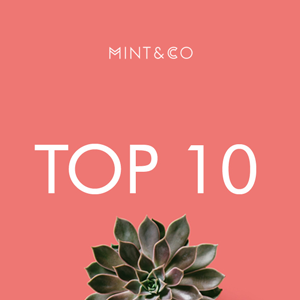
a) If you can possibly carve out and retain the copyright in your underlying ‘format’ (if there is one), this means you can create similar projects/content in the future. You may have to agree to a holdback for the client so they have exclusivity for a period of time, and you may have to share some future revenue from your exploitation of the format (try to resist this if you went to the client with a developed format in the first instance, but client may argue they have paid you to develop the format).
b) If you fail at (a) above, try asking the client for the exclusive option (for a period of time or ongoing) to create future projects based on the project you are working on, or failing that at least a first right of exclusive negotiation to work on all future projects. You could try to extend this to spin-off projects based on the same ‘format’.
c) You might be able to ask for a US-style ‘lock for life of series/project’ type arrangement (where, if you do not end up being commissioned to work on the project, you’d still be paid a fee and receive credit).
d) You could ask for a net revenue share from revenue generated by client from the exploitation of your project and all future and ‘spin off’ projects.
e) Think about if you want any approval rights over certain usage not currently contemplated.
f) You might ask for uplift fees for further types of usage in the future, e.g. as a photographer taking photos for a magazine, you might ask for an uplift for TV broadcast usage, or if you’re producing online content for a brand, you could ask for an uplift for TVC usage.
g) It might be appropriate to ask for a rights reversion so that if certain rights aren’t used by the client within a certain period, they revert to you (i.e. so they cannot ‘sit’ on rights they don’t intend/succeed in exploiting).
h) You could request a provision around no ‘derogatory’ treatment of you or the content/product you are assigning the rights to.
i) Ask to be credited!
j) Think about is it worth it?! If you have an amazing proposition, do you really want to give it away unless you can get some of the protections above? Is there a better home for it? Practically speaking, all companies have to weigh up a mix of IP and cash on their project slates, so if the budget is right, then even without any of the above benefits and protections, it may well be ‘worth it’ to you.
Posted: Tuesday 31st October 2017
Createch 2017 Event
Congrats to the Createch 2017 London team for putting on a truly brilliant and inspiring event, all the talks were great, and spanned music, VR, AI, advertising, fashion, showing the huge potential that cross-collaboration between industries can create. Very impressed by Imogen Heaps’s ideas around how to better harness and centralise artist and song data in the music industry, Oculus and Facebook’s showcase of cross industry use of VR (e.g. healthcare as well as entertainment; their video of dementia patients watching nature videos in absolute delight left the audience watery eyed), Future Fact’s ‘Delusion’ VR show, Discovery’s collaboration with Lad Bible to access target audience, Royal Shakespeare Company’s Tempest avatar, and many more. And what a great idea to end with a live performance. We’re looking forward to seeing what they create next year!

A few takeaway messages:
1. VR content is going to touch so many industries as well as pure entertainment and media – it’s already making strides in healthcare as showcased by Oculus’ video in a dementia patients’ home, as well as use in educational arenas. For example, Oculus’ health training exercise to explain surgery to children. Matthew Drinkwater from LCF Fashion Innovation talked about the potential for designers collaborating in a VR space to create a product, the potential for VR to change the selling experience (virtually trying on clothes, walking through a retail environment in VR). It’s really great to see it being used cross-industry and to see different industries collaborating.
2. Predicted growth of VR from a study commissioned by Oculus: 49% over next 5 years.
3. Carlos de Arriba from Oculus – the key to VR success will be content that makes our world feel closer and more connected, it will be social (spending quality time with friends), and it will be on hardware that is accessible and intuitive. They are already experimenting with Facebook Friends VR App and Facebook 360 Live.
4. Brands are becoming more engaged in interactive content with a social purpose. This interactive app created by Cheil for Samsung – for school kids to engage with Shakespeare (featuring Akala and David Tennant), is a great example of how tech can inspire and engage children to learn, particularly about subjects they might otherwise have found difficult to engage with.
5. Susanna Dinnage, President of Discovery Networks UK and Ireland, made good points about brands needing to become more consumer centric as opposed to brand centric, to ‘let go’ of their IP a bit, and collaborate more to reach their target audiences. They did a deal with LAD Bible and gave them 60 hours of content ‘to go and play’. They produced, amongst other things, cut downs of Idris Elba’s Fighter programme, showing his training to be a kickboxer, put this onto Sport Bible and reached 5m views.
6. Tanya Samuels from Future Fact sent a simple but important message about tech being integrated fully into the format, rather than being a more clunky ‘add on’. Formats that give the user the feeling that ‘one aspect cannot live without the other’. Clips of their VR programme ‘Delusion’ about people facing their phobias, created using scientific and medical research, showcased exactly that.
7. Bossa Studios talked about how in gaming, when people come together to experience something, the users become the co-creators of the content and this helps a game to grow. Human bonding over shared experiences is key.
8. Royal Shakespeare Company’s avatar in the Tempest created in collaboration with Intel – cannot wait to see this! What a visual delight.
9. Imogen Heap is completely right and gave a truly inspiring talk – there is a bigger conversation to be had in the music industry that is not just about artists being paid fairly (albeit of course that is extremely important). She would like the industry to develop a ‘healthier’ and less complex ‘ecosystem’ which includes an easier way of allowing other talent to collaborate and remix her music as long as she is credited and it is not derogatory, as well as a central ‘creative passport’ that holds all the information relevant to an artist and their songs – e.g. the credits, correct lyrics, gear used to produce and record, a blog on how the track was made, links to social media, artwork credits, video credits. She experimented with a Digital Wallet to pay musicians from a track released on her website, all were paid their share instantly, instead of having to wait months and years for payments from collecting societies. She has written an article about some of this here.
Posted: Thursday 22 June 2017
CAP’s new guidelines for online advertising to under 12s
As part of CAP’s commitment to protect children in the online world, CAP has introduced new guidelines to help ensure that younger children can recognise when they are being marketed to in certain online environments. Marketing communications where the advertising is highly immersive or ‘blended’ with the surrounding content are the main target. For example, paid vlogs, branded content on third party sites, advertiser-created games on third party sites.
The guidance applies from 1 June 2017, and marketers must make clear up-front their identity and commercial purpose, if this is not otherwise clear from the context. The disclosure must be ‘prominent, interruptive and adequately indicate the commercial intent’.

‘Prominence’ will take into consideration the size and placement of the notification and even asks for the ‘colour’ to stand out. ‘Interruptive’ relates to the child being able to tell it is advertising, before engagement if the medium permits, otherwise the notification should appear as the communication is activated. Regarding indicating the advertiser and commercial intent, the guidance states that prominent branding by itself, if the brand is well known to under 12’s, could be sufficient. “In association with” and “sponsored by” are not recommended as messages, but ‘created by X’ is stated to be adequate. For vloggers of a paid endorsement video, the guidance talks about the vlogger specifically mentioning that they have been incentivised to produce the content for the brand.
The guidance provides advice on various specific examples with useful visuals.
See:
Younger Children and Recognition of Online Advertising
Recognition of Advertising Online Marketing to Children Under 12
Posted: Friday 9 June 2017

PACT Review of Digital Terms
Linked to the above topic, we were really pleased to hear in Broadcast in May, that PACT are going to be looking into the online terms producers are receiving from broadcasters for their online platform commissions (e.g. Channel 4’s All4). Better terms for producers (let’s not forget – the creators of the content and IP) need to be obtained, striking a fair balance between the broadcasters and producers’ commercial exploitation rights and split of revenues.
Posted: Saturday10 June 2017
YouTube Content that will no longer be eligible for ads
YouTube announced in its blog on 1 June, that it will take steps to ensure certain inappropriate content (including hateful content and inappropriate use of family entertainment characters) cannot earn revenue from ads. Some might wonder how a creator being unable to earn ad revenue will make a parent feel better about their kids stumbling across an inappropriate Spiderman video, but at least this is a step in the right direction (albeit seemingly aimed more at appeasing advertiser relationships than viewer protection/experience).
Posted: Saturday 10 June 2017

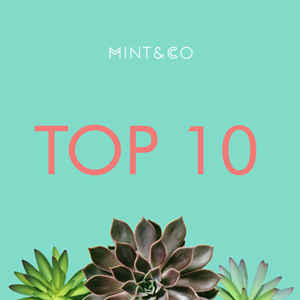
Top 10 tips for archive and stills clearance
When you are clearing stills and archive for your programmes and content, remember to look out for the following in your licence agreements:
* Ensure that the owner/archive library warrants that they either own, or are the authorised licensee, of the material. You’d be surprised how often this is missing! Then ask for an indemnity to back this up (in the event they are not in fact the owner and someone else is, you want to ensure they will reimburse you the costs and expenses of any claim against you).
* Ask them to warrant that the material does not breach any third party rights (including copyright, moral rights, image rights, privacy).
* Ideally you want a warranty that you do not need to obtain any further consents and licences (e.g. if the archive is a piece including contributors and music and actors, a warranty that you do not need to clear any of those separately). Quite often, this warranty is not given and you may find yourself having to clear these ‘underlying rights’ with the relevant rightsowners.
* Make sure that if you breach the licence, e.g. exploiting beyond the agreed term or territories, that the owner/licensor cannot revoke the material and make you take it down (it’s obviously a costly exercise to call back and re-edit, and not ideal for your relationships with commissioning broadcasters & platforms). Instead, ensure they acknowledge they have no right to injunct/restrain the programme or content. N.B they’d still have a damages claim if you were in breach. E.g. in the above two examples, a logical amount would be an extra licence fee for the increased usage outside the licence.
* Carefully check the rights licensed – do they cover what your commissioning broadcaster/platform is asking you to clear for? Are you obliged to include a quote for any ‘clearable’ rights, e.g. uplift fees for an extension of the licence term or licensed rights?
* Do you need to overlay graphics/other effects, mash it up with other content or otherwise ‘modify’ or ‘adapt’ the archive/stills – if so, check your licence allows for this, sometimes it is expressly prohibited.
* Watch out for material marked ‘editorial’, quite often this will be too restrictive for your project.
* Check if you need to licence the right to use the archive/stills for promotion of your programme/content.
* Check the credit requirements are consistent with your broadcaster/platform’s credit guidelines, ideally insert wording in the credit clause along the lines of ‘subject to the credit guidelines of the relevant broadcasters, platforms and distributors’.
* Ensure there is a provision allowing you to assign the agreement (ideally without limit, but at the least, to financiers broadcasters distributors and group companies).
Posted: Saturday 10 June 2017
How much for your branded content
commission/video vlog?
Advising across branded content deals for several producer clients, it’s apparent that budgets for branded content vary quite widely. We’ve seen production fee margins range from 12-20%, and lower budgets offered for an ‘online’ commission, even though the rights granted are actually ‘all media’ rights. In reality, this is still a new area with everyone finding their feet, and inevitably some brands have bigger budgets than others. But seeking a higher production fee margin and higher budget than TV commissions is now very standard practice. If your budget and the contract is structured for online exploitation only, think about specifying an uplift fee for other media uses (including broadcast), or at least leaving this open to be agreed in good faith.

From a creator/influencer perspective, we were interested to read this article on TubeFilter about the Internet Creator Guild’s recent survey. Albeit from a US angle, the survey is a good source of tips for when creators are negotiating commercial terms for deals with brands. For example, they point to the “scarcity” factor – creators with a unique or niche edge commanding higher rates, charging more when the brand asks for final editorial approval (as this involves more work and managing with less creative control for the influencer), charging more for additional promotional social media posts and charging higher rates when the creator has a particularly desirable audience for their brand.
Posted: Saturday 10 June 2017
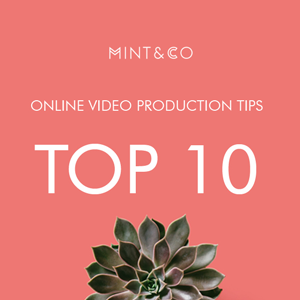
Online Video Production Tips – Top 10
When you are creating videos that you will upload to an online platform, e.g. YouTube or social media platforms like Facebook and Instagram, there are various considerations you need to be thinking about, to ensure you are not infringing any third party rights and putting yourself at risk of claims. Below is a brief checklist of things to consider. The phrase ‘clearing’, referred to below, is used in the industry to mean seeking consents/permissions/licences from the relevant rightsholders, which can usually be done with simple ‘contributor’, ‘location’ and ‘materials’ release forms in most cases.
* Your contributors: (interviews/pieces to camera/vox pops/presenters etc): wherever possible, you want to be clearing them via a contributor release form, for for use that is on an all media, worldwide, in perpetuity basis, so there can be no doubt that they have consented to be in your video, or the rights they have assigned or licensed to you. If a release form is not practicable, then you should at least seek agreement over email of the rights granted, to avoid any disputes down the line. If the contributor is higher profile they may well want to restrict your usage rights.
* Underlying rights: Check if you need to clear underlying materials – for example, music, third party footage, still photographs. You will usually need permission of the underlying rightsowners. With third party footage, there will be an owner of the copyright in the actual footage, but the contributors/actors will also have performance rights that may need clearing depending on how they were contracted initially.
* Music: is a complex subject, as there is separate copyright in the sound recording, the music and the lyrics. With a piece of music, this could mean clearance with a record label, publisher(s), artists, composers, musicians, or with collecting societies managing rights in tracks within their repertoire. As a general comment, in terms of music for your video, it is usually easier and more cost effective for low budget online videos, to use music library music. Some library music has the mechanical rights cleared but not the performing rights (e.g. Audio Network). However, if the online platform in question does not have a PRS (or equivalent performing right society licence), then a mechanical rights-only cleared music library will likely not be suitable, and you will need to use music from a library that is fully ‘bought out’ (in respect of both the performing and the mechanical rights). You should also check if your content is advertising or advertorial (brand–funded), as to whether a platform’s PRS licence extends to this content.
* Third party logos/branding/artwork: these are copyrighted material, and it is always best to clear use of them with the relevant owner, but if this is impractical/impossible then if you really need to feature it, think about blurring so they are not visible. If the use is genuinely incidental you may decide to take a view on the risk of not clearing, after taking advice, however it’s important to note that this principle is based on UK copyright principles and similar principles will not be applicable in other territories.
* Territory, Rights, Term: As you are creating content for online, the territory should usually be world (unless you are able to geo-restrict), and the term should ideally be ‘in perpetuity’ so that you do not have to take the material down. Rights should, wherever possible, be ‘all media now known or hereafter invented’ or similar wording, but could be reduced to online rights only, if required. However you’ll need to carefully consider your definition of online rights to ensure this is wide enough for the required uses.
* Brand Funded: If your content is funded by a brand, depending on whether it is ‘sponsored content’ or ‘advertorial’, there are rules you need to comply with in the ASA’s CAP Code, regarding appropriate labelling, and it may be your responsibility contractually to check that the marketing communication complies with requirements in the CAP code (e.g. not being misleading). See note above in this blog re branded content aimed at under 12’s and blog post from Feb 2017 re labelling advertorial content.
* Minors: If you are filming with minors (generally 16 and under), you should obtain parent/guardian consent (ideally both parents/guardians where applicable) who should sign a contributor release form. Most production company guidelines and broadcaster guidelines view people under 18 as a minor. You should not take under 16’s out of school to film unless you are happy to go through the process of obtaining a child performance licence from the relevant LEA, which can take some time. Minors should be accompanied by a parent/guardian/responsible adult or a licensed chaperone for any filming activities.
* Making allegations: avoid making, or showing your contributors making, any negative allegations against a company/its products or services or any people, as these allegations could be defamatory unless they can confidently be substantiated as true, and as you are a publisher of the content, you could be on the hook for a claim. It may still be appropriate to ask the relevant person/company for a right of reply and to include this in the content you have filmed, in the same way as a TV programme.
* Ofcom: If you have a channel and generally produce longer form content, check if you need to register it with Ofcom (previously ATVOD) as an ‘On Demand Programme Service’ (ODPS). If so, certain rules will apply to your content on topics such as protection of under 18’s, product placement of a brand’s products and services, secret filming, certain banned products for sponsorship.
* Platform Rules: Don’t forget to check the community guidelines and specific rules for the platform you are uploading the content to.
Posted: Saturday 10 June 2017
Format Infringement
Law firm Simkins succinctly reviews an interesting format infringement case, this time between Sky and two co-creators around a music competition show concept:
Simkins Format Infringement Case
It’s common in our industry to see concepts being copied, but it’s also common for similar ideas to be developed independently by different parties, so keeping detailed and dated records of your development process will help in the event of any dispute.
Mint & Co’s Spring 2017 Blog had some top tips on protecting pitch materials and concepts – check them out further below.
Posted: Saturday 10 June 2017
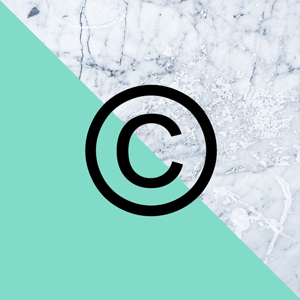

IP Myths
Law Firm Lewis Silkin’s key takeaways from their Brands and IP Myth Busters has some useful reminders about things like the difference between the TM and R signs used next to trademarked names and the ‘20 second’ use of music myth
Posted: Saturday 10 June 2017
Within Your Rights?
We attended the Society of Authors event ‘Within Your Rights?: Fair Use, Copyright and Commissioning for Authors and Producers’ at Waterstones in May, with a panel comprising an author and lawyers from the BBC and PACT, with an audience of predominantly authors rather than producers of content.
It was interesting to hear the authors’ views of how difficult they find it when their work is used without payment, either under fair dealing principles or otherwise, when they feel a lot of work and knowhow has gone into researching and writing their material. Many talked about being frustrated when producers come along and use their book and research sources as the whole foundation/inspiration of their programme (rather than taking any actual extracts from the book). Strictly speaking, the panel concluded this is likely not to amount to a breach of copyright, and authors mentioned that they felt that copyright law did not adequately protect them in this scenario. However interestingly, the panel said it is possible for a particular interpretation of factual events to be copyrightable, as that could be deemed sufficiently ‘original’.

A key takeway for us, was a reminder that producers should act responsibly and respectfully when speaking to authors. Many authors felt that junior researchers would often be tasked with talking to them about their work early on, taking up a lot of the author’s time, for free, without being clear about what they needed from the author as their involvement in the programme. Even if parts of the book do not need to be licensed for the programme/film, often it’s useful for the author to be a ‘consultant’ on the programme, and they should of course be remunerated from the budget for this role and perhaps also given a credit if the broadcaster’s credit guidelines allow. However, we also felt that several authors in the audience were perhaps not entirely clear on the parameters of fair dealing, and understanding the rationale behind it, of allowing producers to legitimately use short extracts for the purpose of review or quotation (or other allowable fair dealing uses under UK copyright law). The magic word here is ‘fair’, and in all cases, it should be an exercise that the producer undertakes of balancing the author’s right to be remunerated for use of their work and producers being able to legitimately fair deal small amounts of an author’s work for their programme.
Posted: Saturday 10 June 2017

Ofcom’s report on the media use of children
* Published 16th November 2016, the report showed that children’s internet use is higher than ever, with young people aged 5-15 spending around 15 hours each week online. This exceeded time they spent watching TV for the first time.
* Pre-schoolers, aged 3-4, are spending eight hours and 18 minutes a week online, up an hour and a half from six hours 48 minutes in the last year.
* Ofcom’s data shows children aged 5-15 have upped their online time per week by an hour and 18 minutes in the last year to 15 hours.
* TV weekly viewing fell from 14 hours 48 minutes in 2015 to 13 hours 36 minutes in the last year.
Posted: February 2017
Committee of Advertising Practice (CAP) bans advertising of high fat, salt and sugar (HFSS) food and drink products in children’s media
* The rules will apply across all non-broadcast media including print, cinema, online and social media, bringing them into line with broadcast rules under the BCAP Code.
* The rules apply to under-16s and will come into effect on 1 July 2017, both to content made for children and content where children represent over 25% of the audience.
* The Department of Health nutrient profiling model will determine which products are HFSS.
Posted: February 2017


RTS Event December 16: Social Media Muscles In On TV
Another great RTS event. We learnt so much from it, but in summary these facts, figures and announcements stood out:
* 95% of live social conversation around TV happens on Twitter.
* ‘Live’ content on social is growing: reportedly 500 million + a day are putting videos on Facebook Live, including broadcasters.
* Figures estimate that 50% of all mobile traffic now is video.
* YouTube’s Stephen Nutall announced that they re-invest more than 1/2 of revenue they make in content, much like a PSB.
* Twitter announced ‘Live is big for us. We want to partner people’!!
Posted: February 2017
ASA
Great to see CAP has launched an e-learning promotional marketing tool to support companies undertaking promotional marketing – prize draws, promotions, competitions, discounts etc. They are offering 25% off until Friday 3rd March for a fee of £75.
Posted: February 2017



MINT & CO’s TOP 5 FOR PROTECTING YOUR PITCH MATERIALS
It’s unfortunate that original ideas seem to get pinched regularly in our industry – re-worked a little bit to make them sufficiently different, and then launched as someone else’s original format (all without anything being paid to the party who pitched the idea in the first place and spent a whole lot of hours/cash developing it). Of course, people develop the same or similar ideas independently of each other all the time, but it’s worth thinking about how you can better protect your position when you go to a meeting to pitch an idea or send pitch documents across to a company to consider.
Mint & Co’s top 5 tips are:
1. Sign an NDA
* To say the ideas and materials you disclose are confidential (but note that if any elements are already out there in the public domain, they won’t attract the status of confidential info).
*If you are sent an NDA to sign before a pitch, make sure to cross out any clauses saying you assign all the IP in your ideas presented at the pitch/meeting. Otherwise refuse to sign it. It’s unfair. Fairest position: you each own the rights and IP in your respective contributions to the pitch meeting until any later agreement is signed at project stage.
2. Include a copyright and confidentiality notice on pitch documents/treatments
* This puts the potential client on notice that you own the pitch document and the ideas set out in it and that you expect them to be treated as confidential and not disclosed to others. An example line might be “this pitch document and all concepts and ideas contained in it are the copyright and property of X and X’s confidential information. You are not entitled to use or disclose this pitch document or the concepts contained in it (or any part of them) in any way whatsoever without X’s prior written consent”.
* Put your notice wording in bold at the bottom of each page of your pitch document so it can’t be missed.
* N.B it’s unlikely that all of your documents/their contents will be treated as confidential info/copyright material, but it does get people to think twice about stealing your ideas.
3. Consider not giving too much away
*At least until the point of commission/paid development. Do you need to give full blown detail? But bear in mind that copyright only attaches to concepts that are sufficiently detailed, so try to ensure a good balance between making the important pitch elements detailed whilst not giving too much of the whole idea/project away.
4. If pitching verbally
* Make sure you include all the detail of what you’re pitching in the written documents that you leave with someone, or send it as a follow up in writing after the meeting. Copyright only attaches to ideas in written form.
5. Date documents and log all of your proposals and pitches
* Date all of your documents.
* Keep detailed records of the date you sent any pitch materials/presented them, who you presented to/who they were sent to.
* Keep materials in a central file dedicated to pitches and keep all corresponding emails and NDA’s in a folder along with pitch materials.
Posted: February 2017
WHAT ARE SECONDARY RIGHTS AND HOW CAN YOU MONETISE THEM?
* In brief summary, secondary rights income is money generated from a bundle of rights which includes cable and satellite re-transmission fees, public performance levies and rental and lending rights income. Cable and satellite re-transmission fees relate to royalties collected by collecting societies from the re-transmission of your programming. Your distributor may well be collecting royalties without you realising, taking a cut of commission and expenses, and submitting the remaining revenues to you. If they do, then check the commission rate, as typically this should be much lower than the usual 25-30% as there is less work involved with this administrative task.

* Check you’re not missing out on income from exploitation of your programming in the UK and Eire – from the commissioning broadcaster’s transmissions and permitted third party re-transmissions of your programming.
* There are companies that can administer secondary rights royalty collection for you, including Compact Media.
*If you’re interested to learn more, this 2015 submission to Ofcom from Compact contains some interesting information, focusing on EU territories:
Posted: February 2017

LABELLING ADVERTORIAL CONTENT
*In magazines, online editorial, video content and social media (vlogs/blogs/tweets etc), remember to label advertorial content in the correct way. See here for detailed advice from CAP.
*In summary it will be classed as advertorial where the content is controlled by the marketer/advertiser, not the publisher/producer/platform, and where there is payment or other reciprocal benefit.
*The ‘control’ test is satisfied where the marketer/advertiser has final approval over the content. Sponsored content is different because the marketer/advertiser will not retain final editorial control.
*It should be made clear that advertorials are marketing communications. ASA recommends the following: ‘a prominent header along the lines of “Advertisement”, “Advertisement Feature”, “Promotional Feature” or similar, to distinguish them from genuine editorial.
*If you are a social media “influencer” and a brand would like you to create some content funded by them, to be shown on your channel, with the brand retaining editorial control over the content: remember to label the content appropriately, which can mean in the description box, the thumbnail and in the video itself. The brand/agency should be able to provide you with guidelines, but if in any doubt you can ask ASA or we can help guide you.
Posted: February 2017
Please note: all statements in this section of the blog are accurate as of the date of posting, but circumstances may change over time.


